Story and photos by Jonathan Sharp
Let us take a walk along the gravel paths of William and Mary’s great fountain garden of 1689-1702, located on the east front of Hampton Court Palace. Enjoy with me a selection of world class automobiles entered in this years “Concours of elegance” held on August 31 to September 2.
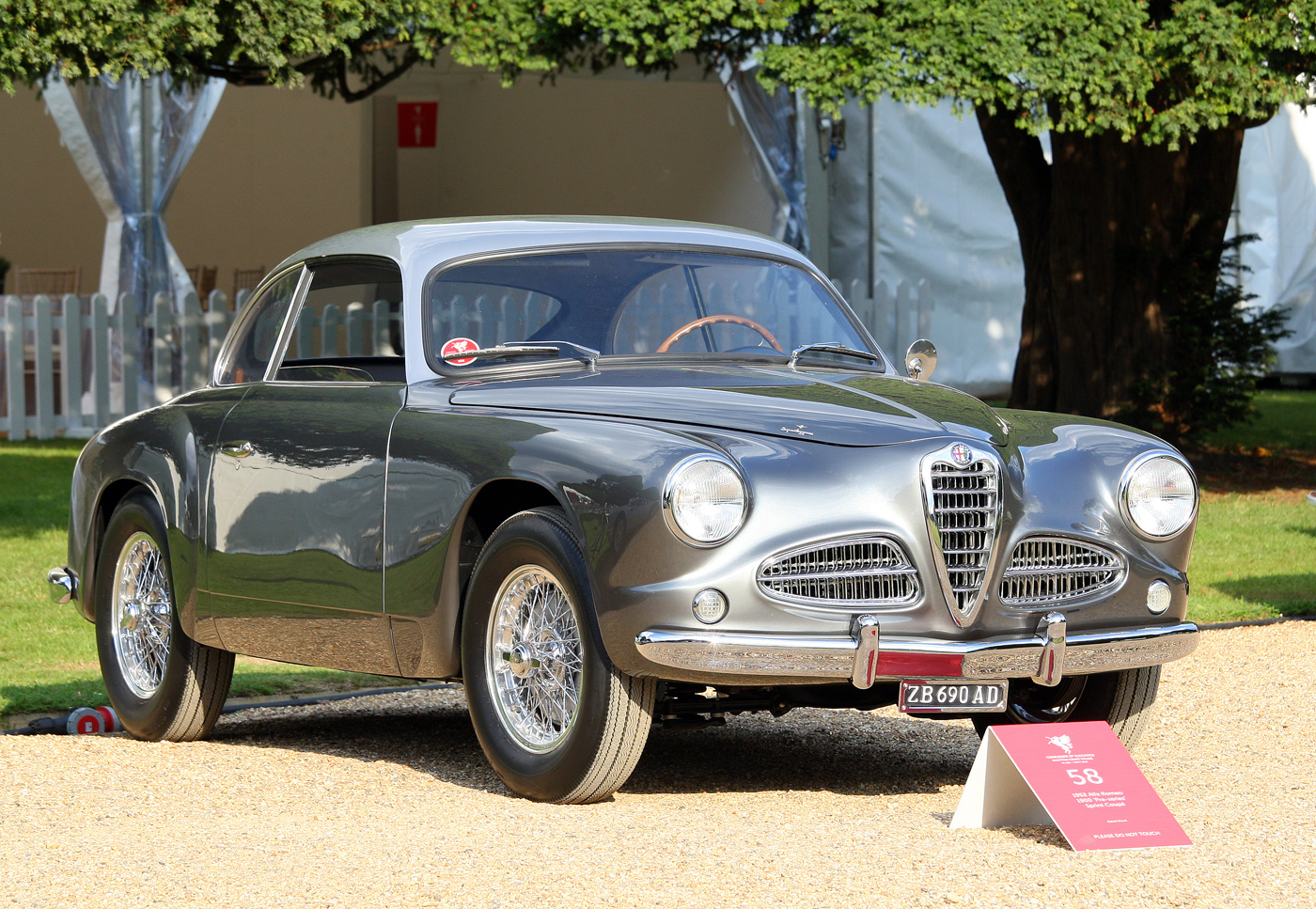
Delivered to a customer in Pennsylvania in May 1952 this Touring bodied Alfa Romeo 1900C Sprint is from the first series.
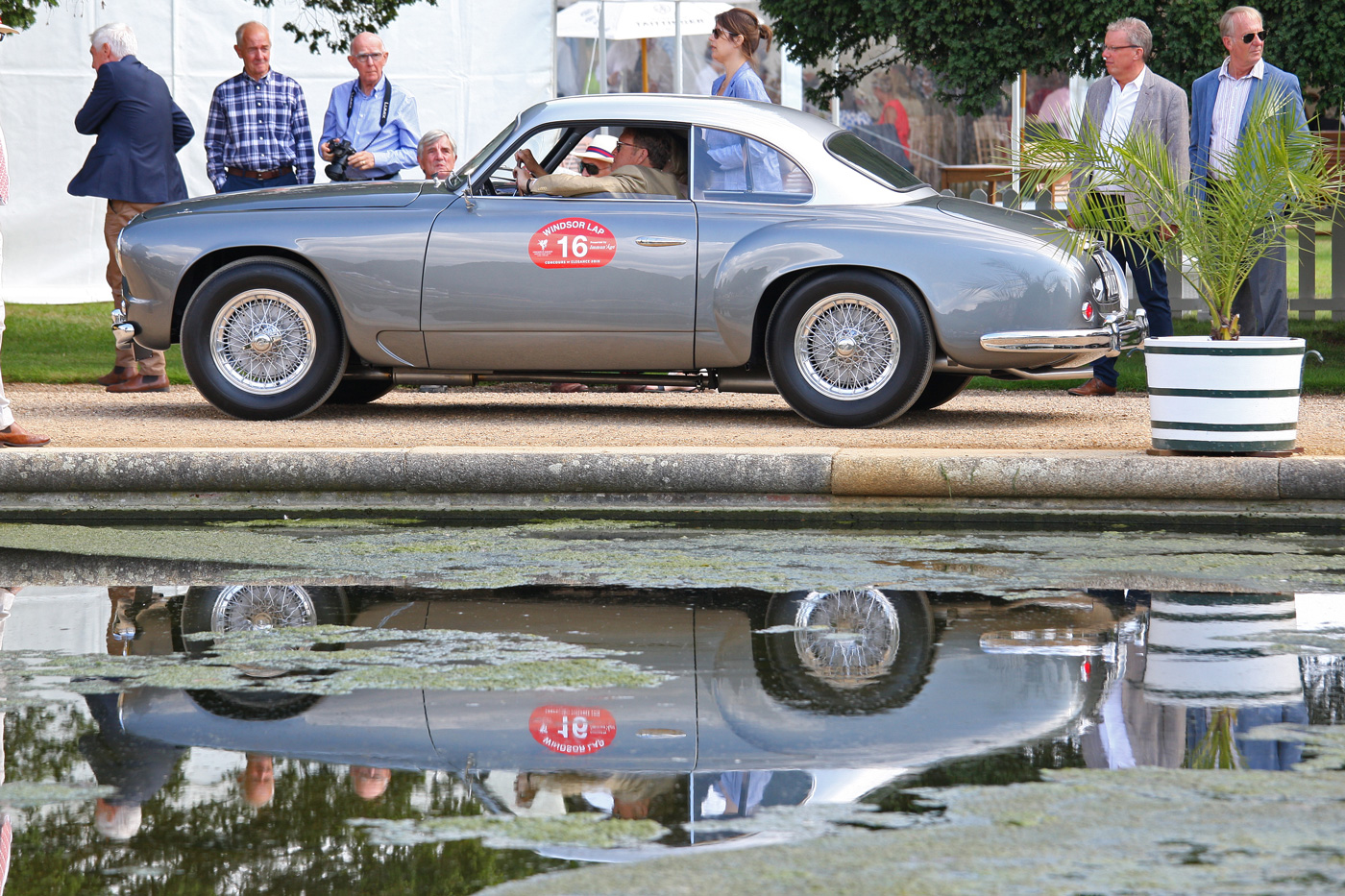
Now a frequent concours winner and rally entrant, it was restored over 3 years by Vermont based specialist Restoration and Performance Motors. The current custodian purchased the car from Italy several years ago.
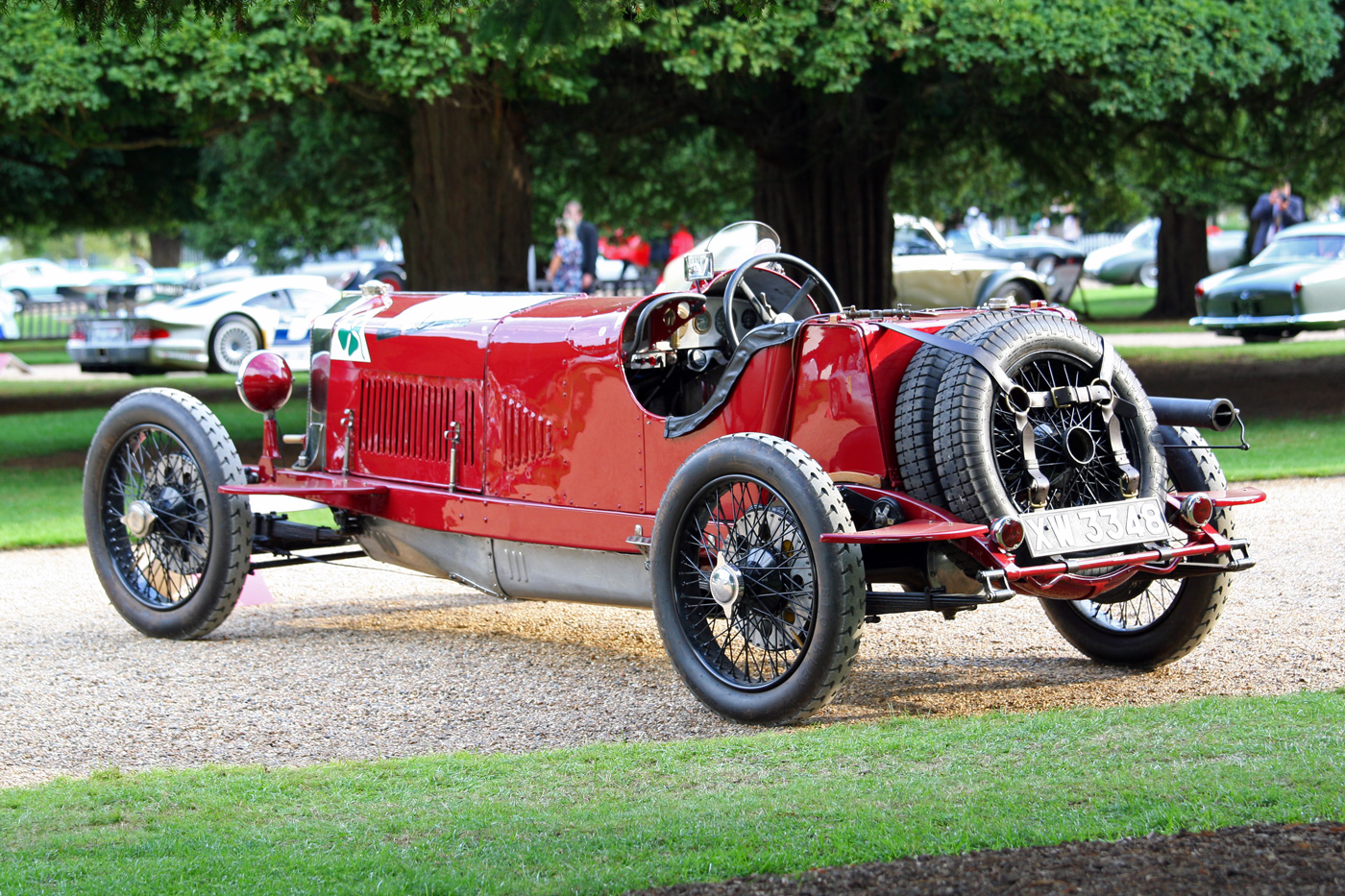
Chris Mann’s Alfa Romeo RL Targa Florio is one of only two survivors of the 1924 works race cars. Five were built for 1924, four having been built for the previous season. No record exists as to which factory driver drove what car but Ascari was leading the Targa Florio when his engine seized within sight of the finishing line. All was not lost however as Masetti finished second and Campari fourth, both in sister RL TFs. In 1924 the car was registered in the UK for Agostino Lanfranchi to drive at Brooklands, having been supplied to its new owner by Tony Lago, later of Lago Talbot fame. It was raced extensively at Brooklands (winning with a best lap of 94 mph). The RL has been with the Mann family for over 60 years.
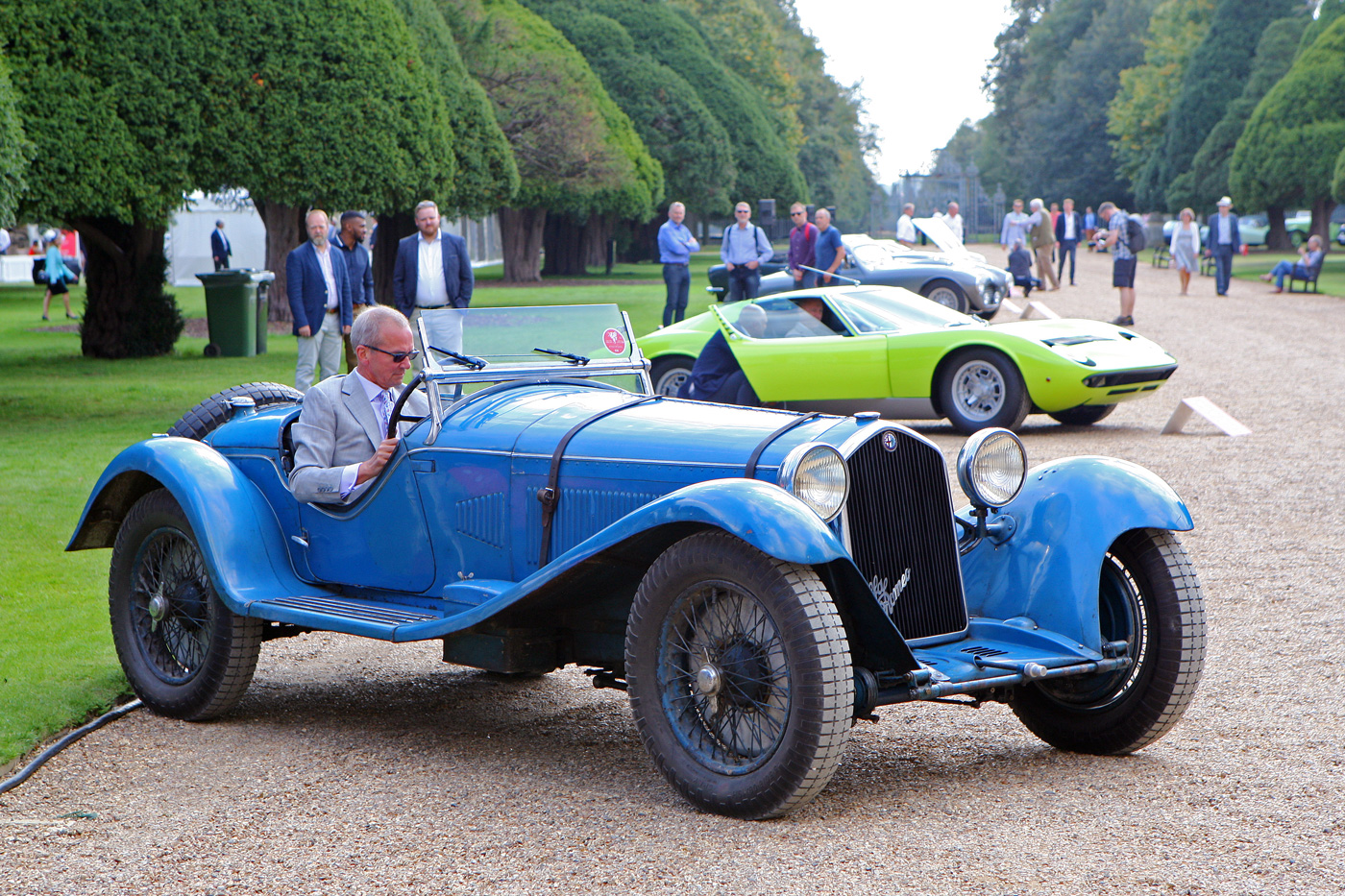
This 1932 Alfa Romeo 8C 2300 short chassis spider is unique in having coachwork designed by Giuseppe Figoni. The first two owners, Mt Weinburg and Count Francois de Bremond both hillclimbed the car.
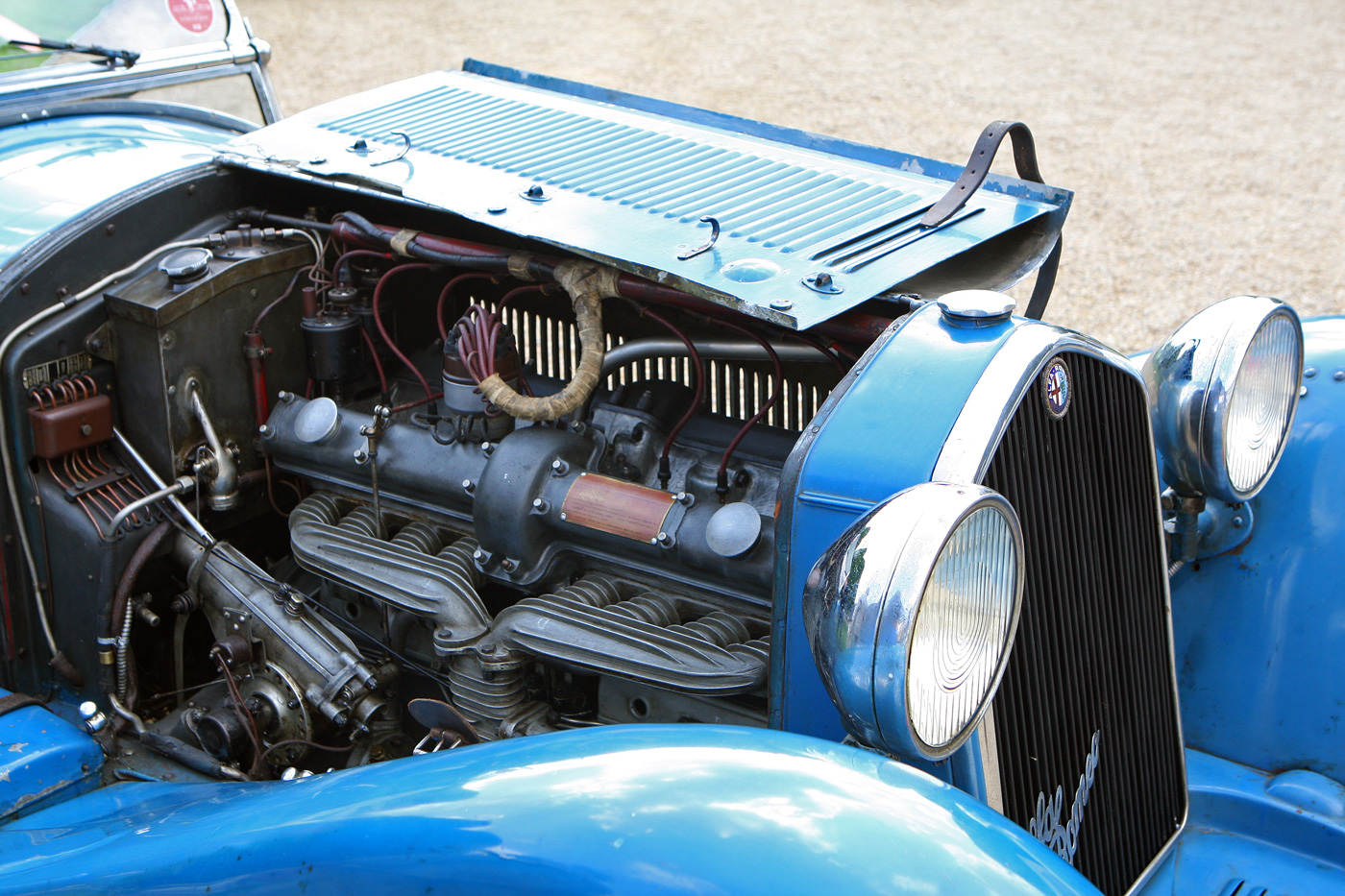
The third owner, who kept the car for 67 years, received the car as a 21st birthday present. In 2014 the car was rebuilt but emphatically not restored, thus retaining its magnificent patina.

This Aston Martin DB2 DHC First Sanction is known in Sweden as the Royal Aston Martin. One of only six open top first sanction DB2s. First sanction is the name given to the early production examples which are characterized by their three-piece front grills, side extractor vents and many other unique features which did not appear on the more numerous production model. Supplied new in 1950 to Prince Bertil of Sweden, a car enthusiast and friend of David Brown, it was given the registration number A29 which it still retains. The Prince drove the car on the parade lap of the 1951 Le Mans 24 hour race with David Brown in the passenger seat.
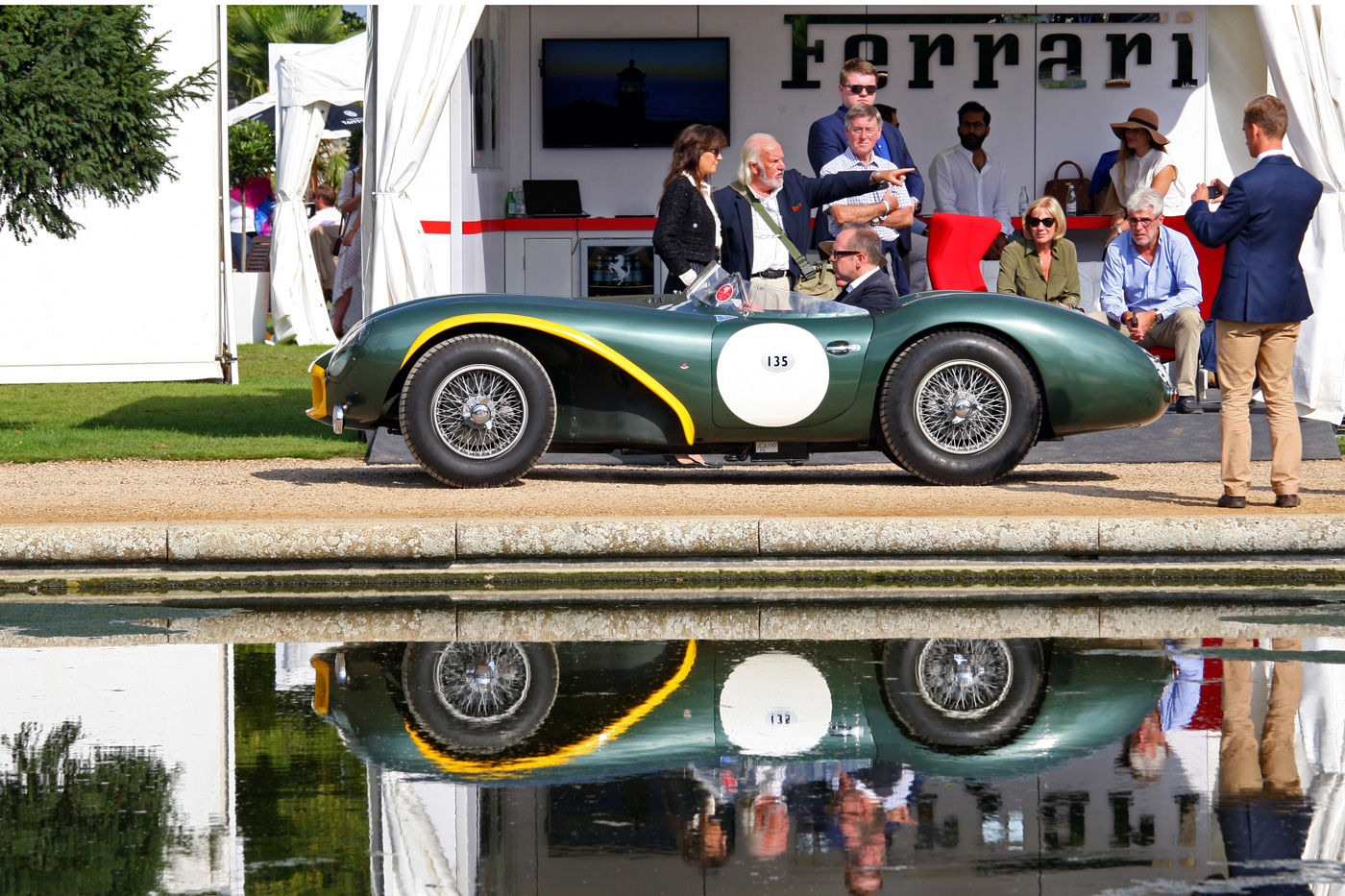
62 EMU, a 1954 Aston Martin DB3S team car, is number 6 of 11 built. Originally built as a fixed head coupe to the design of Frank Feeley and tested in a wind tunnel, the car unfortunately suffered from unpredictable handling which ultimately led to a crash near Maison Blanche during that year’s Le Mans 24 hour race. Completely rebuilt in 1955 with a new chassis and open bodywork 62EMU won at its first outing at Silverstone in May followed by a second-place finish at Le Mans. In 1958, as a private entrant, 62EMU again finished second at Le Mans in the hands of Graham and Peter Whitehead.
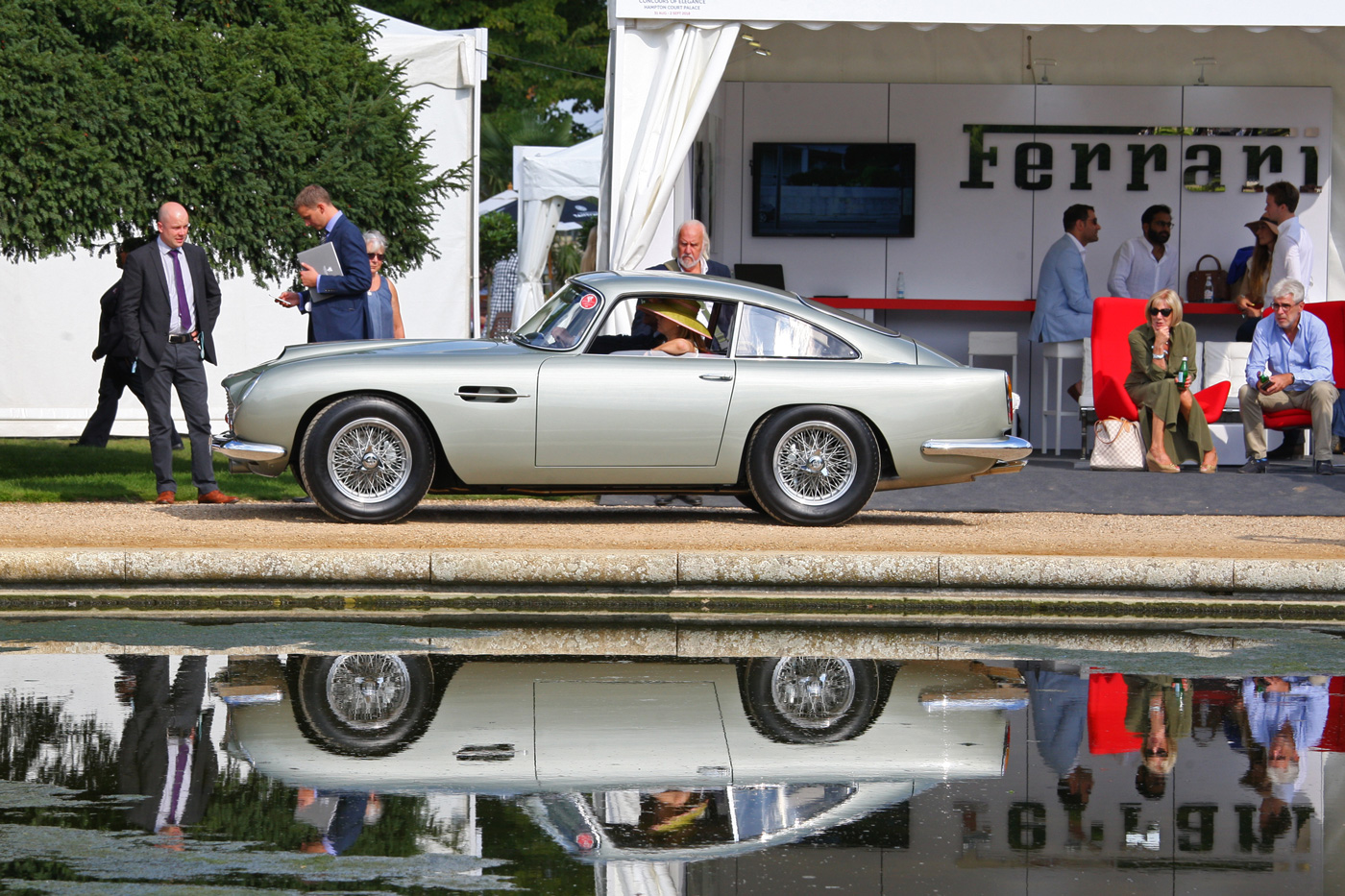
Michael and Lisa Dormer’s much-raced Aston Martin DB4GT was restored in 2015 and is back to being as first delivered in 1960. From the late 1960s to the late 1980s the car was raced extensively by various owners at a variety of UK and European race tracks. The car then spent a much quieter period of time being on display as part of the Blackhawk collection.

This Austin-Healey 100 is the sixth example built and is one of four Special Test Cars constructed in 1953. As a works car it raced at Le Mans and the Mille Miglia. You could be forgiven for thinking that it looks just like a standard Austin-Healey but it is anything but. Under the skin it is lighter, better built and better engineered than the standard car. Aluminum is used extensively to reduce weight and increase performance. The engine was built in the experimental workshop of Austin’s and the gearbox is the heavy-duty Austin Taxi transmission. Of the four built one was broken up and two rebuilt into 100S models. For the Mille Miglia the car was driven by Johnny Lockett and John ‘Jock’ Reid, and for Le Mans the driving was shared between Maurice Gatsonides and Johnny Lockett who finished twelfth overall and second in class.
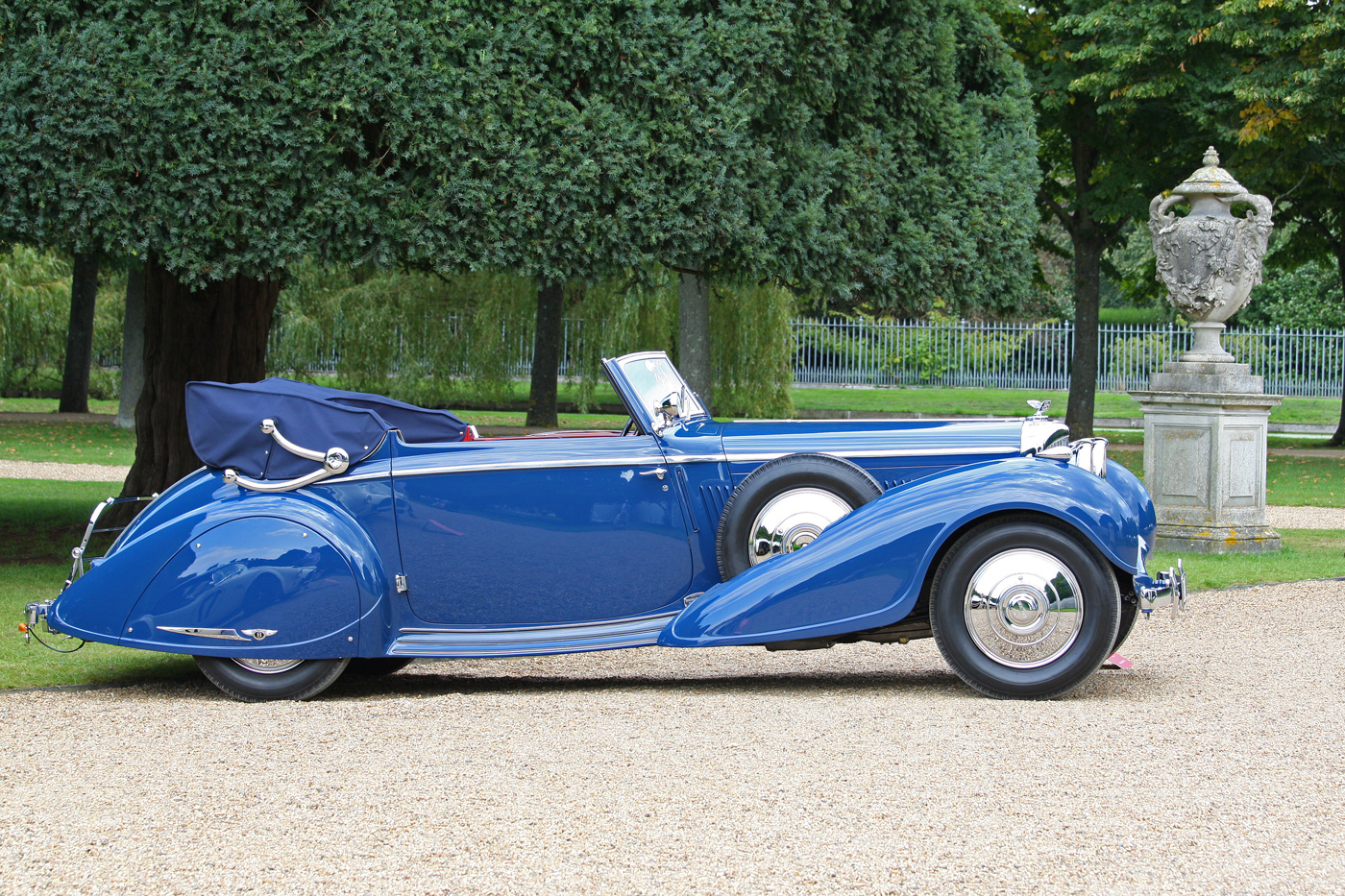
In 1938 successful Berlin banker and opera singer Baron Harold von Oppenheim purchased this Bentley 4 1/4 in chassis form and had it shipped to Erdmann & Rossi of Berlin to be clothed as this four-seat sports cabriolet, and finished in the Oppenheim colors of dark blue and red. In August 1939, whilst driving to Monte Carlo, he realized that war in Europe was imminent so he drove straight to Le Havre and boarded a ship to the USA, with the Bentley secure in the ship’s hold. In America he became Harry Hartwell, rented an apartment above the Ritz, and opened a night club called Chez Harry. Many adventures later Oppenheim returned to German in 1951 but the Bentley stayed in New York. The car’s second owner was William Cronkhite of Pasadena who purchased the car from a New York scrap and car dealer. It came into the ownership of Saulis Karosas, an Erdmann and Rossi enthusiast, who had the Bentley meticulously restored over a three-year period.
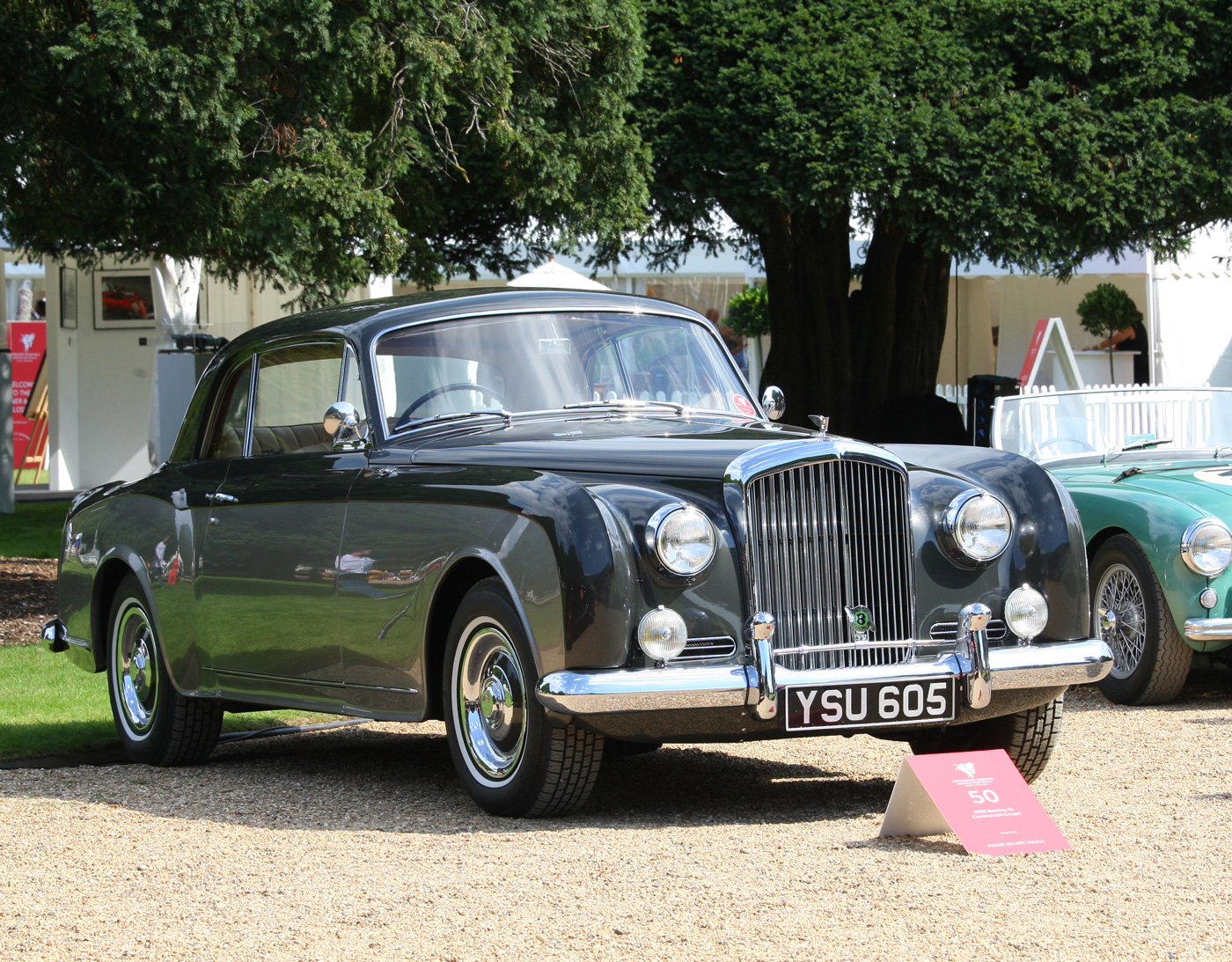
The Countess of Suffolk, a Bentley Continental collector, was well known for driving fast cars and piloting her own helicopter from her Cornish home to Battersea Heliport in London before going onto the Ritz. This superb Bentley S1 Continental by Park Ward was delivered to her home in Florida in January 1957. Born in 1879, Marguerite ‘Daisy’ Hyde was the second daughter of American retail magnate Levi Leiter. She first met her future husband Henry Mollineux, 19th Earl of Suffolk and 12th Earl of Berkshire at the 1903 Indian Durbar (where her sister had become Lady Curzon, Vicereine of India). Following their marriage, the couple lived happily at the Earls Charlton Park Estate in Wiltshire but Henry was killed during WW II. She was nearly 80 years old when she ordered this right-hand drive four speed Continental, one of only 3 of the 431 examples built to that specification. At the time of placing the order for this example she also placed an order for another example to be delivered to her home in Somerset. The Bentley’s current custodian Dr Joerg Wolle enjoys the car on rallies in the UK.
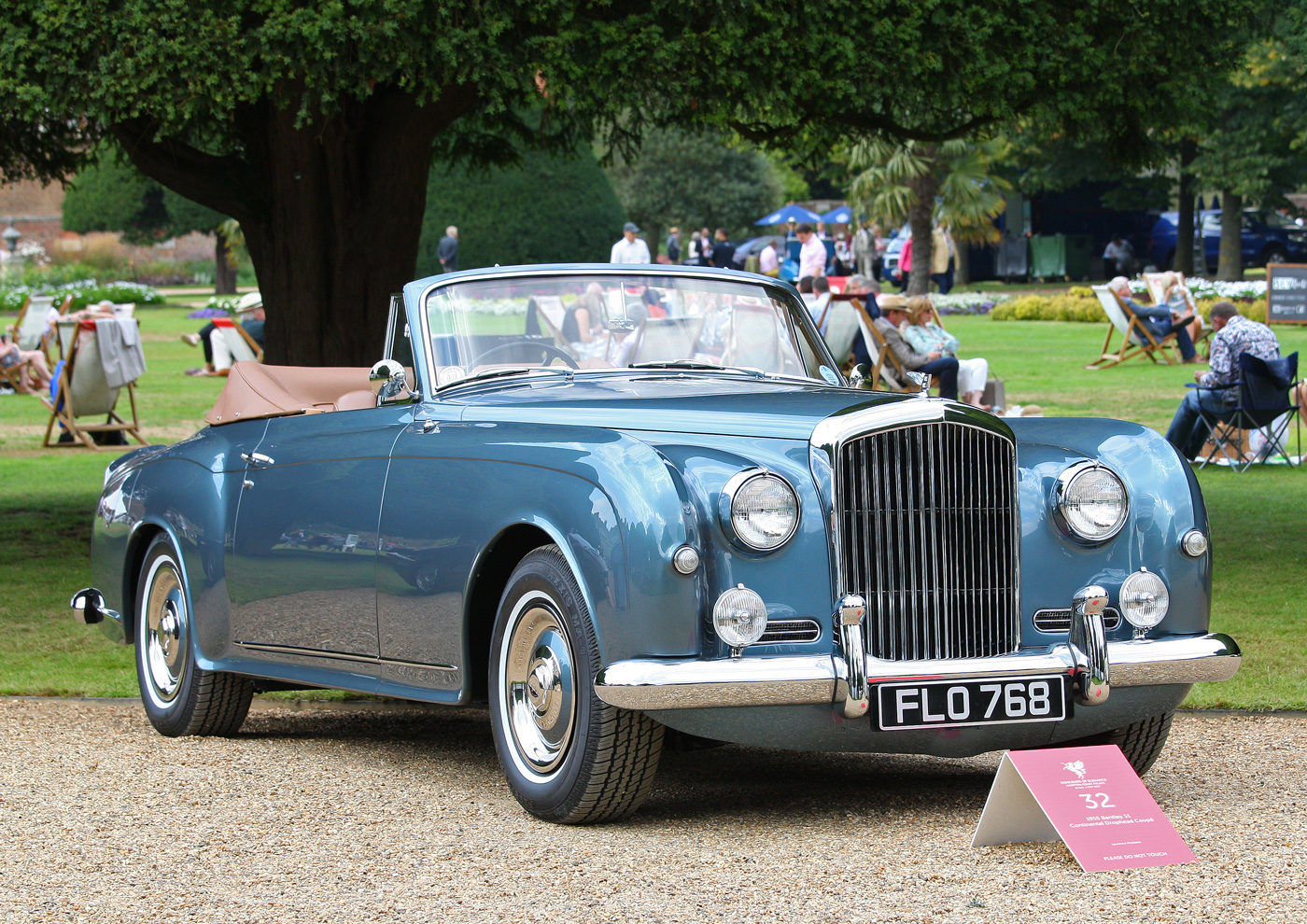
Laurence Modiano’s 1955 Bentley S1 Continental Drophead is one of a few examples built to “Design 700” by Park Ward. From 1955 the straight six engine was enlarged from 4.6 to 4.9 liters and top speed of 130 mph became a possibility. Raymond Mays, when writing in 1953, describe the Bentley Continental as being the equal of many modern racing cars, and superior to some.
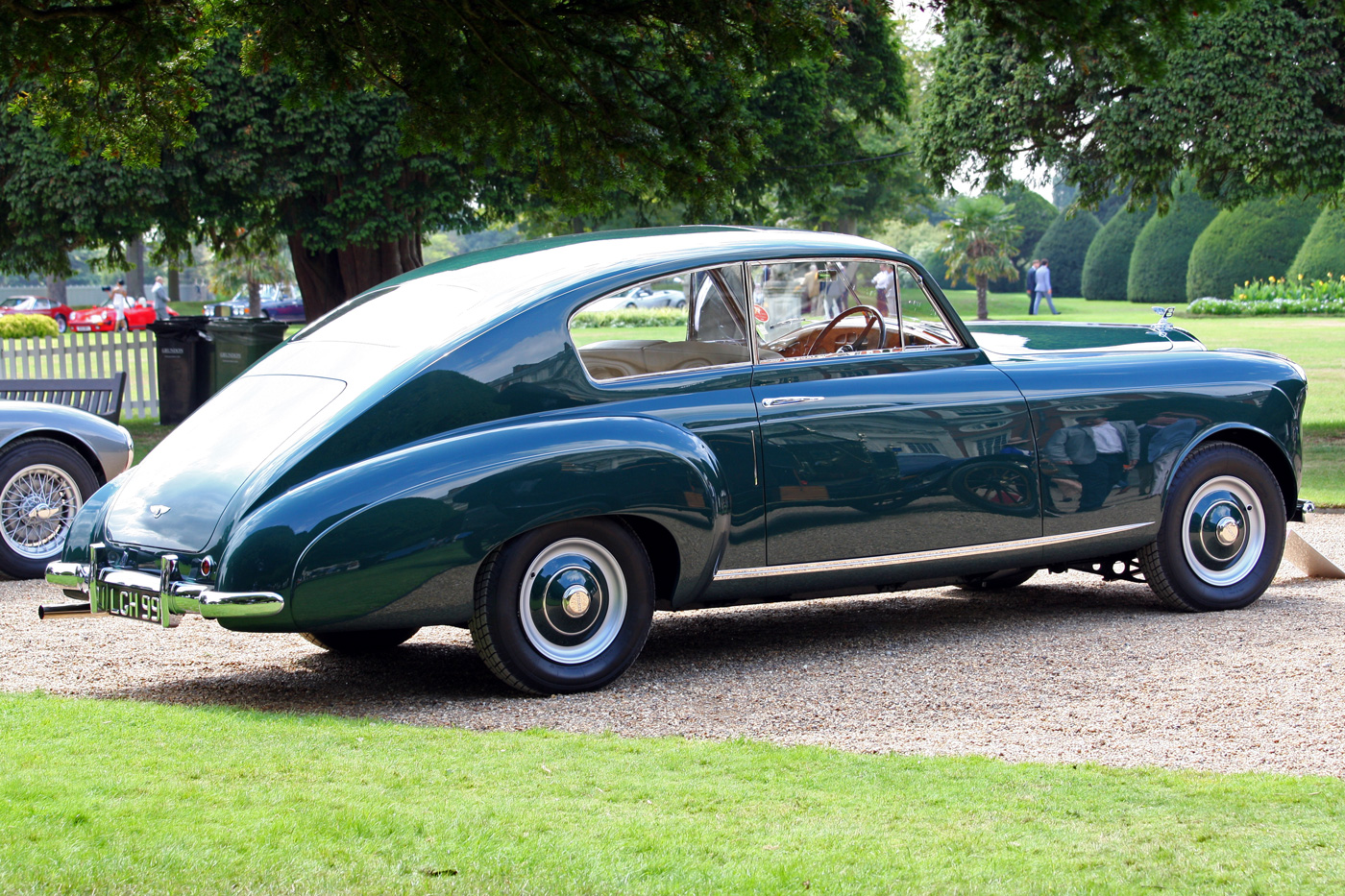
Belonging to Fred Kritz, this 1949 Bentley Mark V1 special Lightweight Coupe is one of three prototypes built by HJ Mulliner of Chiswick London and is the precursor to the R Type Continental. The Mark VI, launched in 1946, was the first Bentley built entirely by Rolls Royce. The steel bodied saloons did not truly reflect Bentley’s racing heritage so something faster and more sporting was required. Mulliner was chosen as they had perfected a method of all-metal coachbuilding which was much lighter than putting panels over an ash frame. The project was led by Ivan Everden, Rolls-Royce chief project engineer, and the design is the work of Mulliner’s Stanley Watts.
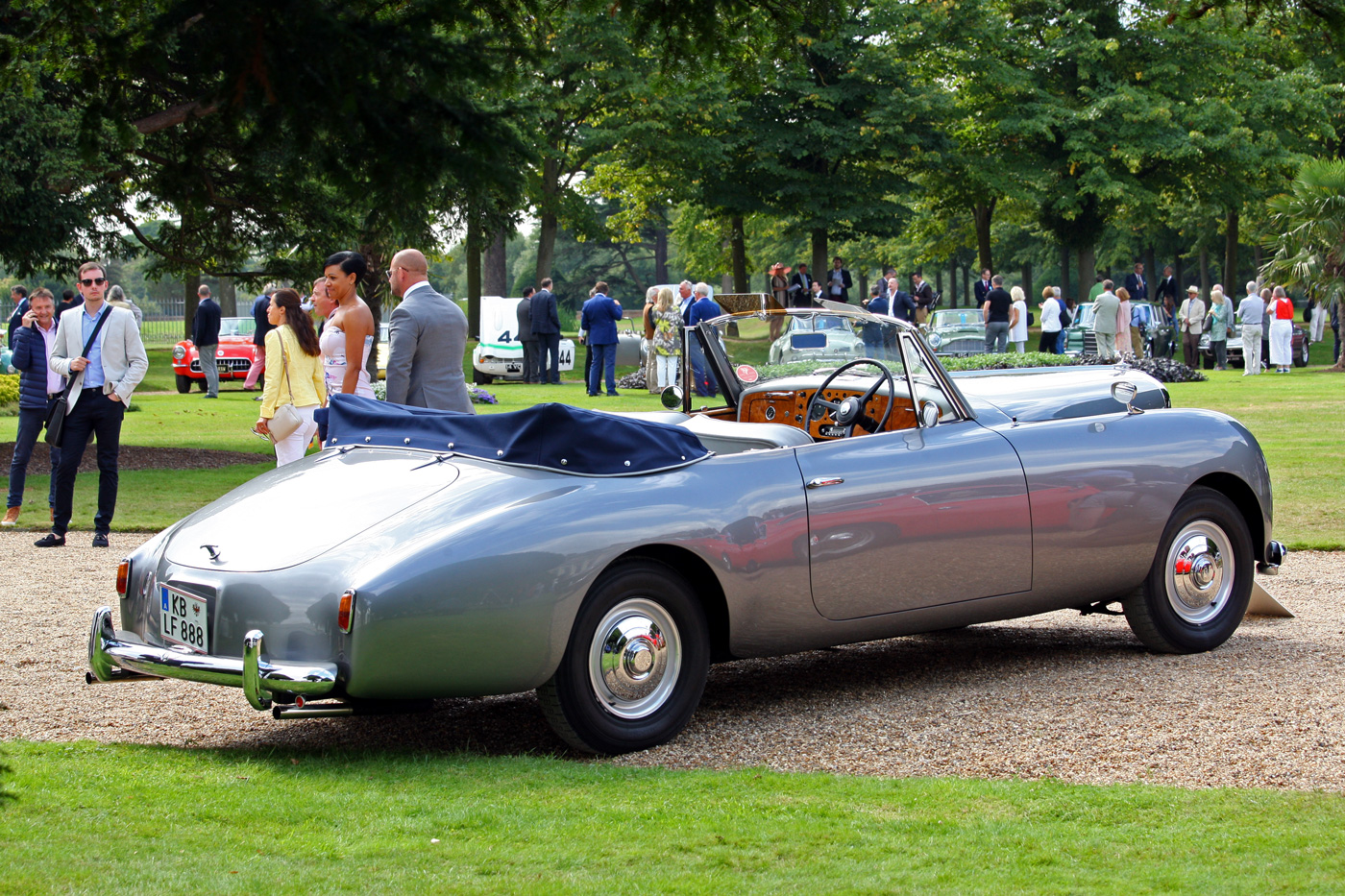
First purchased by Professor Rudolf Geigy, biologist, zoologist and CEO of a Swiss Pharmaceutical company, this 1952 Bentley R Type DHC is unique. The Professor ordered the chassis from Rolls Royce/Bentley in Derby, and had chassis shipped to Swiss coachbuilders Graber to design a drophead coupe for him as a 50th birthday present. The Professor kept the car for a decade before being purchased by an owner in Germany. The car later found a home in Hong Kong. The current owner sent the car to Zweimuller near Linz for a compete nut and bolt restoration.

Naval Commander, Le Mans-winning, record-breaking aviator Glen Kidston is probably better known as a ‘Bentley Boy’, but he was also an admirer of Bugatti. He had already owned and raced a Brescia when He collected his Type 35 direct from Molsheim. He then raced it in the Grand Prix de Provence, and shortly after debuted the car at Brooklands, lapping at over 110 mph. It was sold, and following a blow up in 1936 the engine was replaced with an Anzani unit and the car was again sold to an Australian enthusiast. In 1964 fellow Australian Bob King purchased the car and in 2008 refitted a T35 unit. After owning the car for 52 years Bob sold the car back to the UK whereupon the car went through a detailed restoration for its new custodian Simon Kidston, the nephew of the Naval Commander.
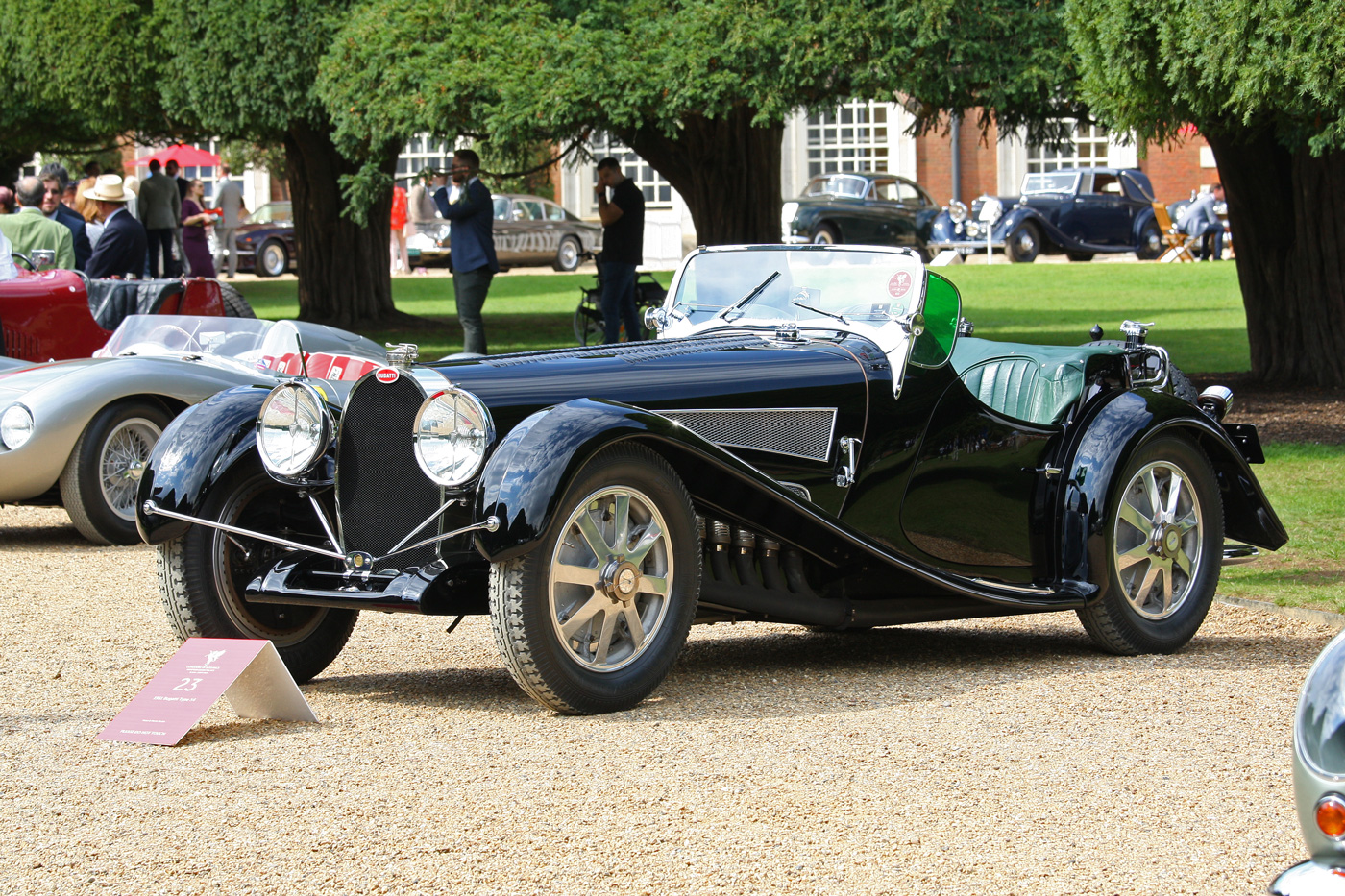
Bugatti Type 54 chassis 54201 was the first T54 to race in a Grand Prix, at Monza in late 1931 in the hands of Achille Varzi. The factory later sold the car, unchanged, to the Bohemian Prince Georg Lobkowicz, who was killed during the Avus Rennen race. The car however was not badly damaged and Zdenek Pohl obtained the car and restored it to its Grand Prix spec. Later, he decided to rebody it as a road car. The chassis was sent to Czechoslovakian coachbuilder O.Uhlik who produced this stunning two seater 300 hp roadster. Pohl kept the car until 1970 when it was acquired by British collector Peter Hampton, who commissioned Crosthwaite and Gardner to restore the car back to its 1931 Monza Grand Prix specification. Californian car dealer Skip Berg later discovered the unused Uhlik bodywork and placed it on a Type 54 assembled by Bugatti specialist Uwe Hucke. The car was then given the chassis number BC-70 by the Bugatti owners club. The car now forms part of the Mullin collection.
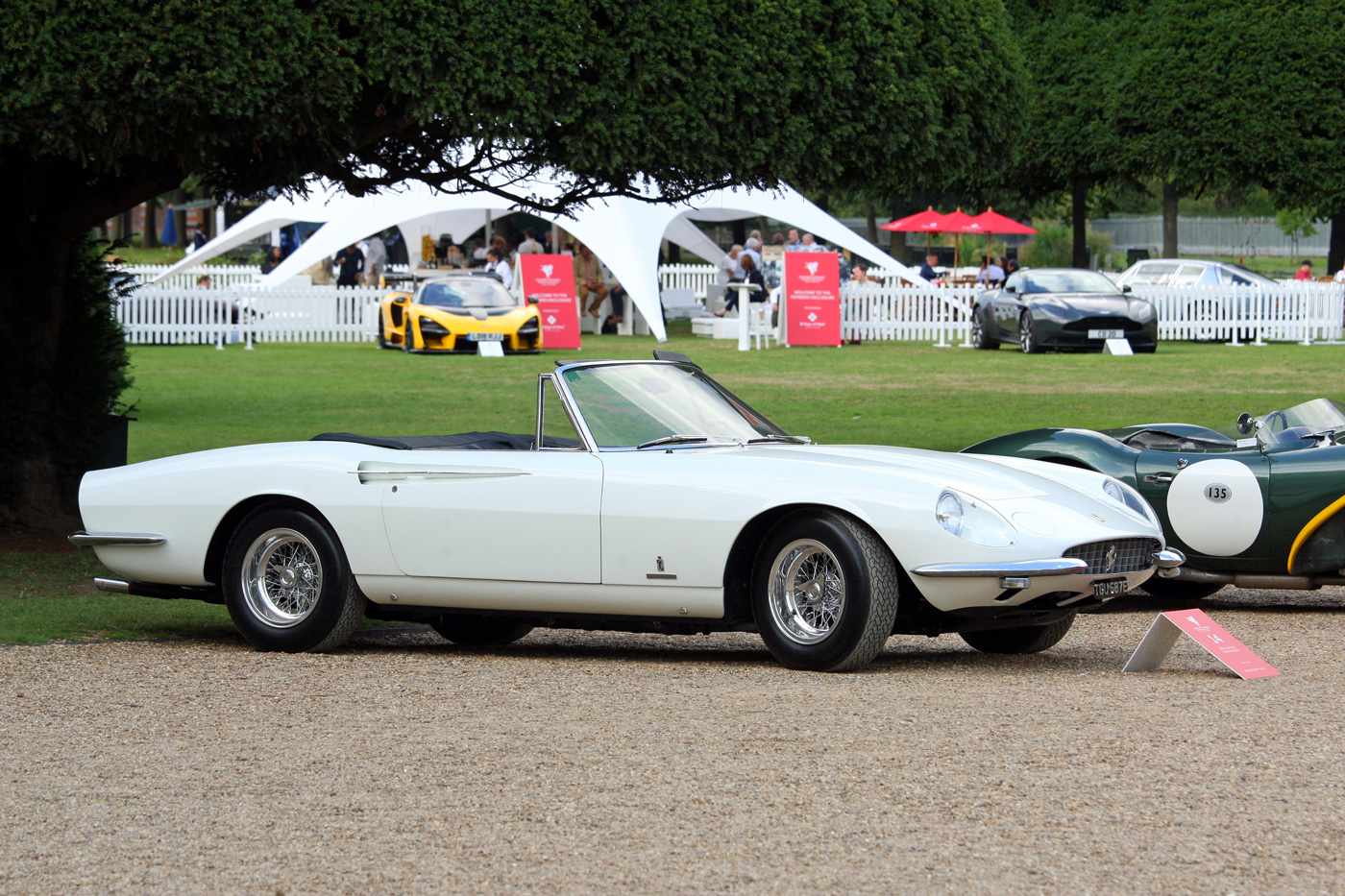
From a private collection, this 1967 Ferrari 365 California was delivered to Luigi Chinetti Motors in July 1967 and the car remained in the States, passing through the hands of several owners. In the early 1970s the car was repainted in a burgundy finish. Restored to a first-class standard during the early 1990s by Michael Regalia, it went on to win many awards at Ferrari Club of America events as well as Pebble Beach and Amelia Island. The car is now finished in her original colors of bianco with Pelle Nera Franzi interior.
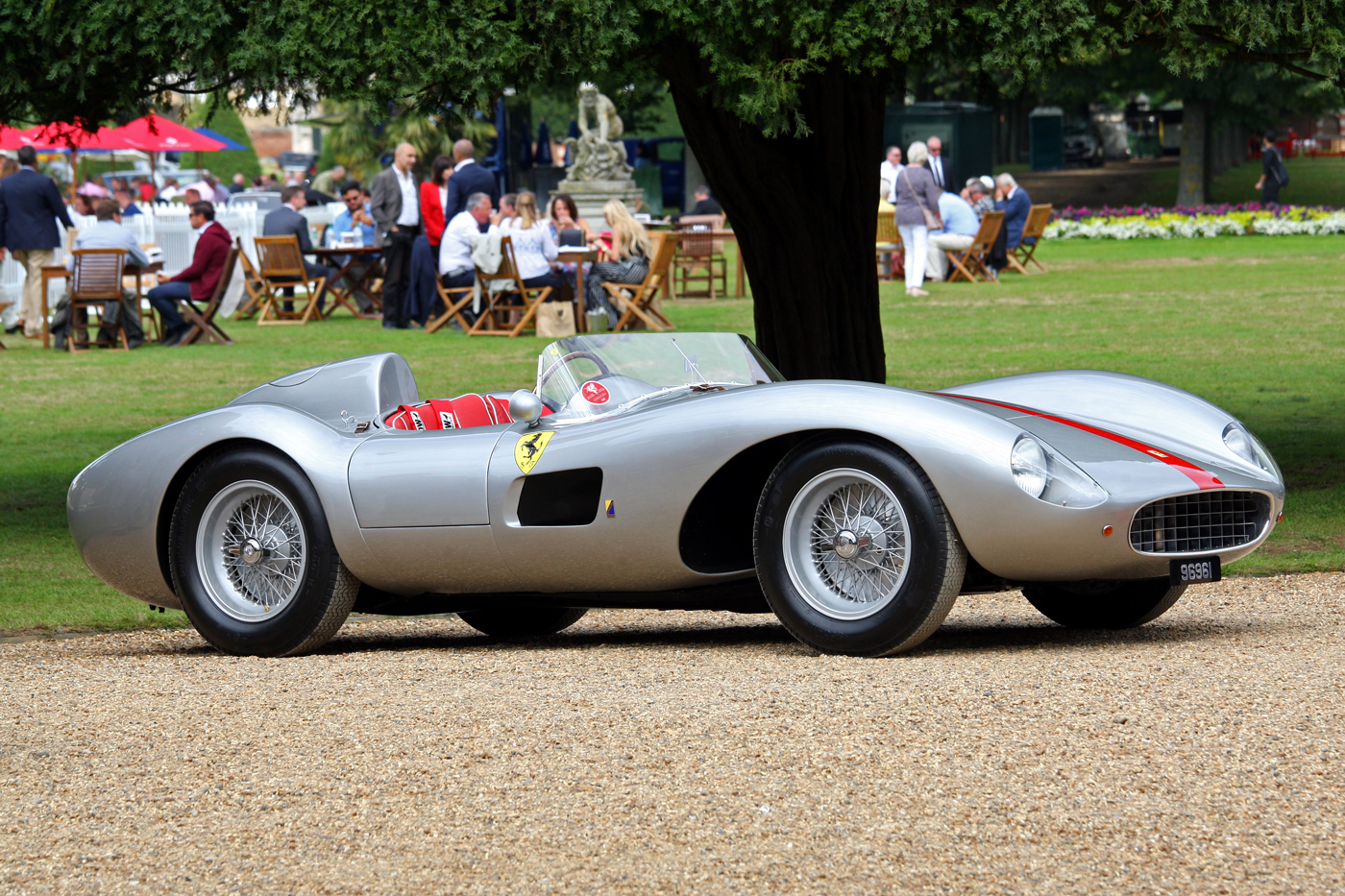
Only 19 Lampredi engined Ferrari 500TRCs were built, each one being supplied to privateers. This example, chassis 0708MDTR from 1957 was the last built and was originally finished in red. It was purchased by John von Neumann, the first Ferrari dealer in California. In the late 1950s the original motor had been replaced by a Buick V8 NASCAR motor and then by another engine in the 1960s. Finally, after many years the car was reunited with the original 1985cc four-cylinder motor.
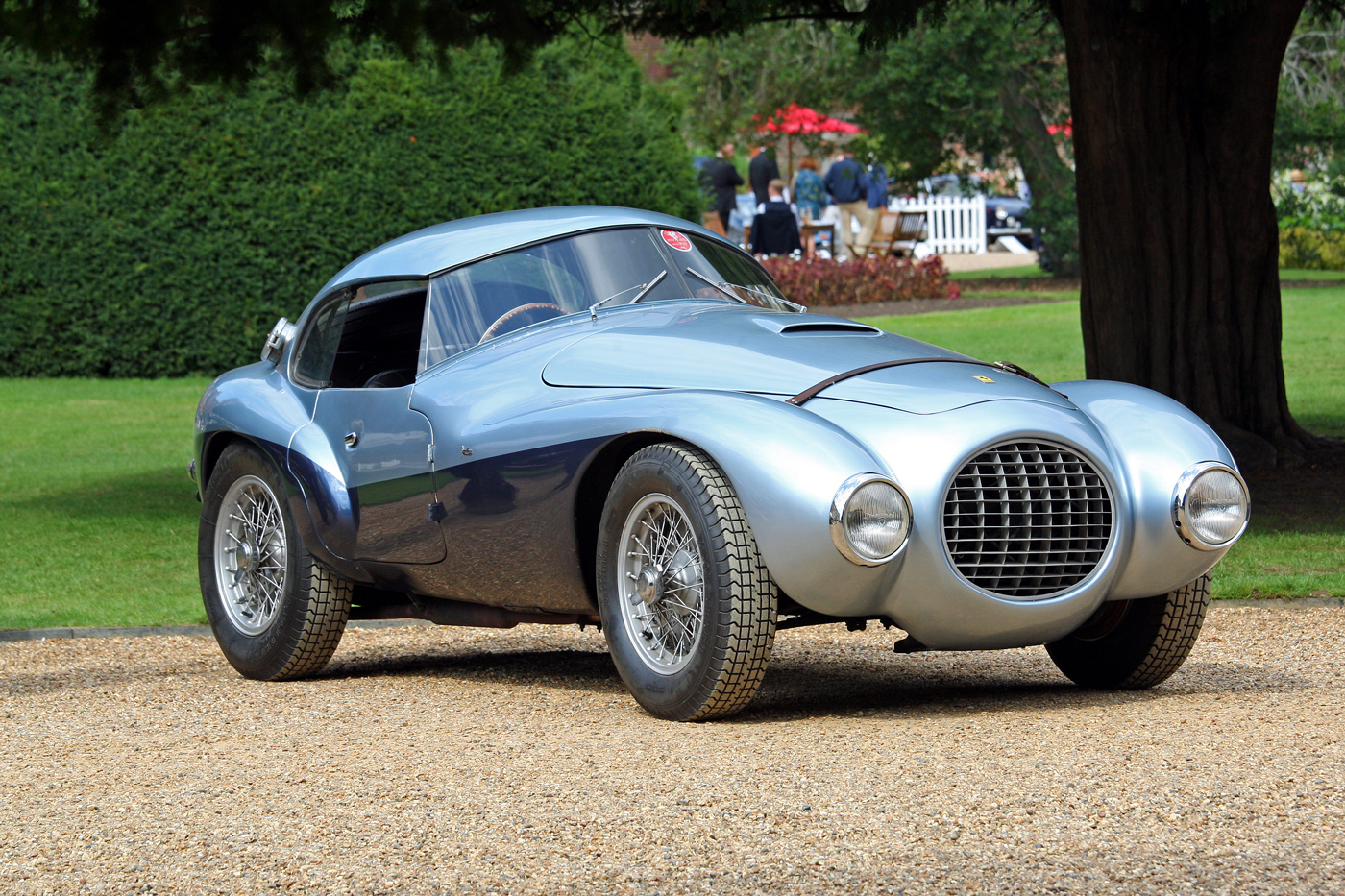
Count Giannino Marzotto was considered a legend having won the Millie Miglia twice, the first time whilst dressed in a brown business suit. Giannino’s brother Umberto bought this Ferrari 166 as a roadster in February 1950 but crashed in during the Mille Miglia. As the car needed a total rebuild Giannino commissioned 25 year- old Franco Reggaiani and Carrozzeria Fontana to create the most aerodynamic shape possible. It is said that at first sight of the Uovo (egg) Giannino was shocked.
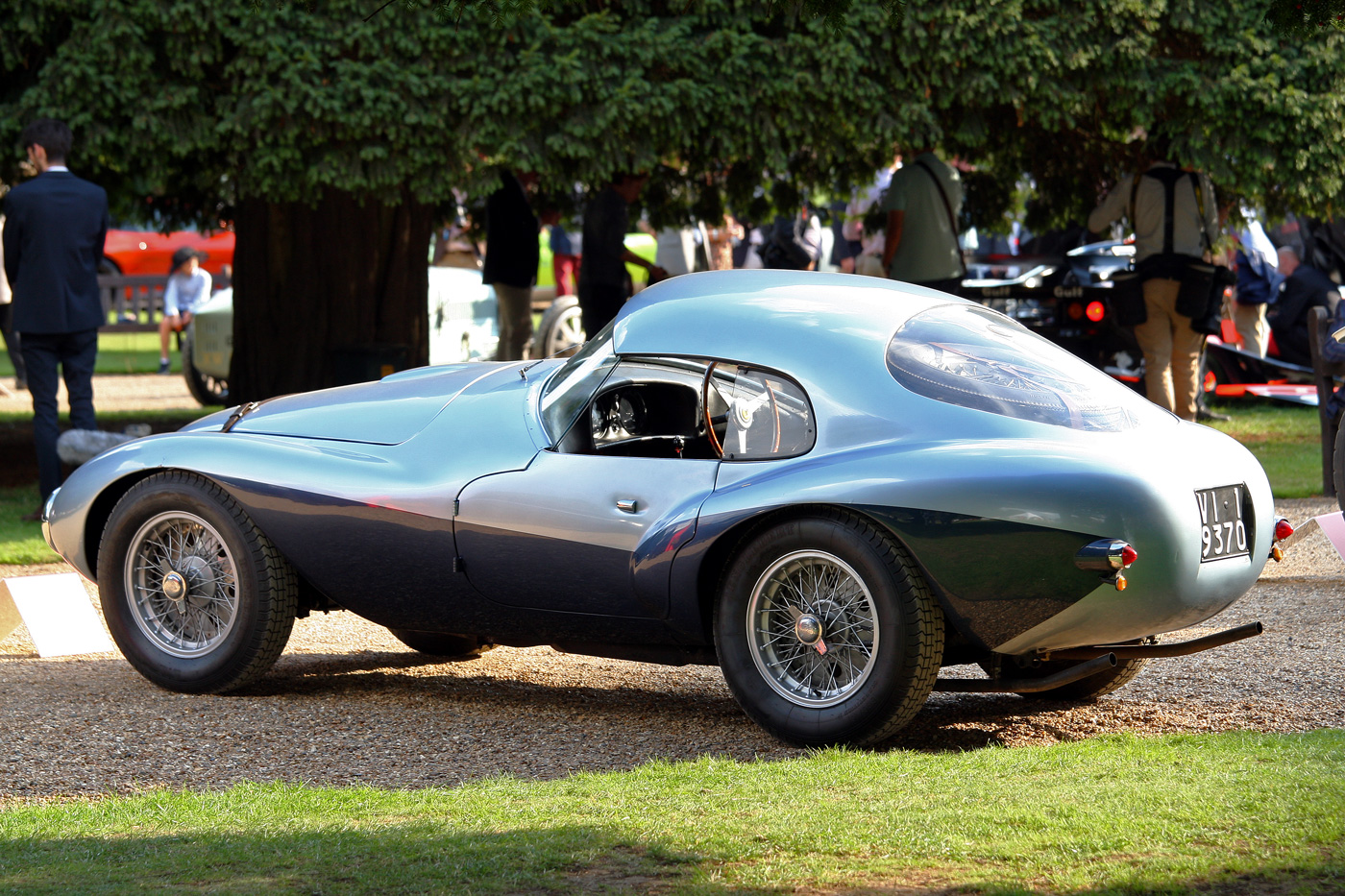
Being 150kg lighter the Uovo performed admirably in the Giro di Sicilia, leading by 20km before a differential seal failed. Later in the Millie Miglia it led the Ferrari 4.1 works cars by 30kms until suffering tire failures. Victory finally came to Giannino and Crosara in the Giro de Toscana. More successes followed during the 1951 and 1952 seasons before the car was shipped to Mexico. Restored in the UK in time for the 1986 Millie Miglia, the car remained in Italy and was rarely seen. Enzo Ferrari, after seeing the Uovo decided to never let another privateer build a prototype on one of his cars. The Uovo is now under the custodianship of Klassische Automobile.
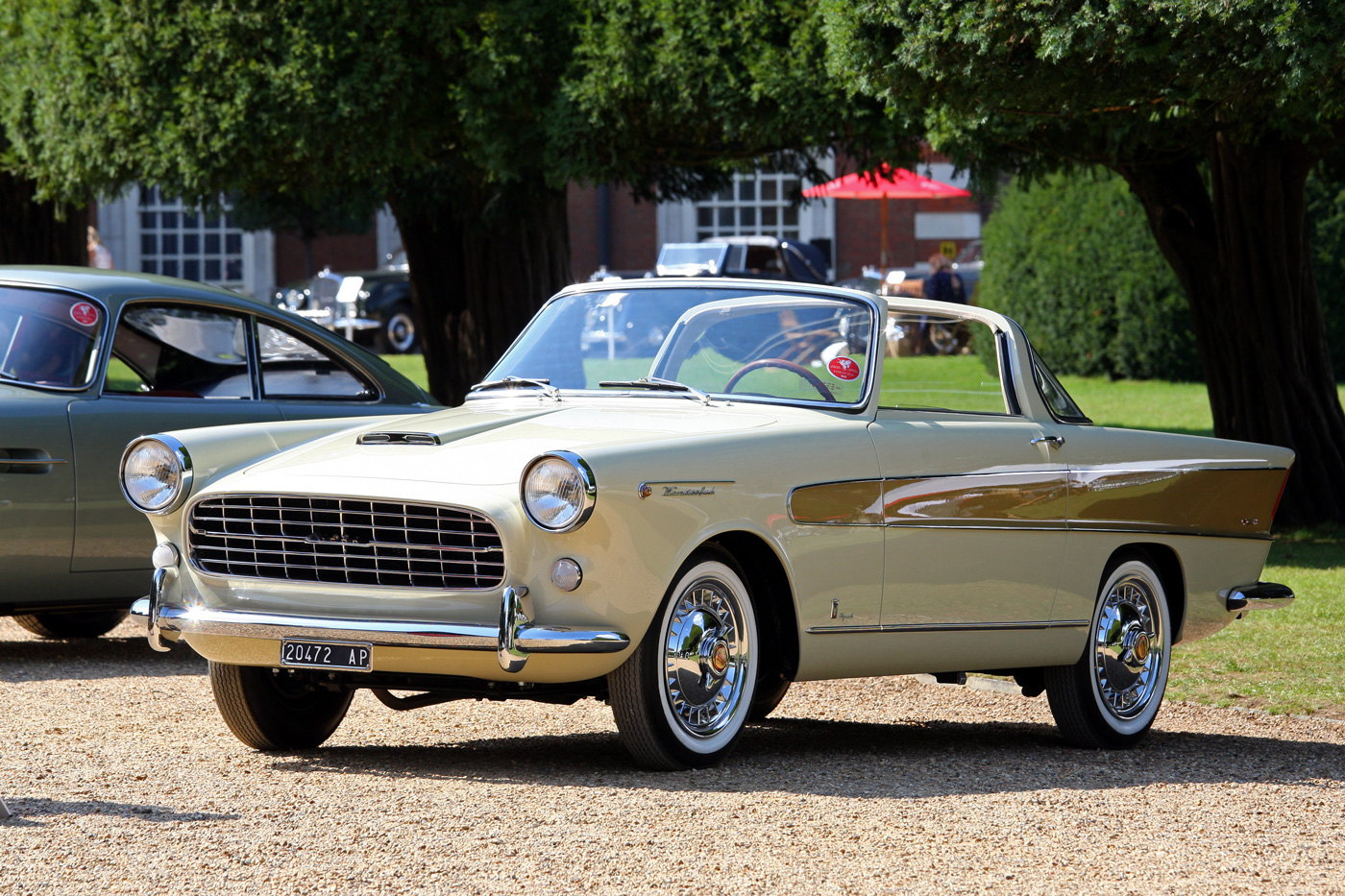
The best named car at the Concours has to be this 1958 Fiat 1200 Vignale ‘Wonderful’. One of only five built and first presented at the 1957 Turin Motor show, the Wonderful was from the pen of Giovanni Michelotti.
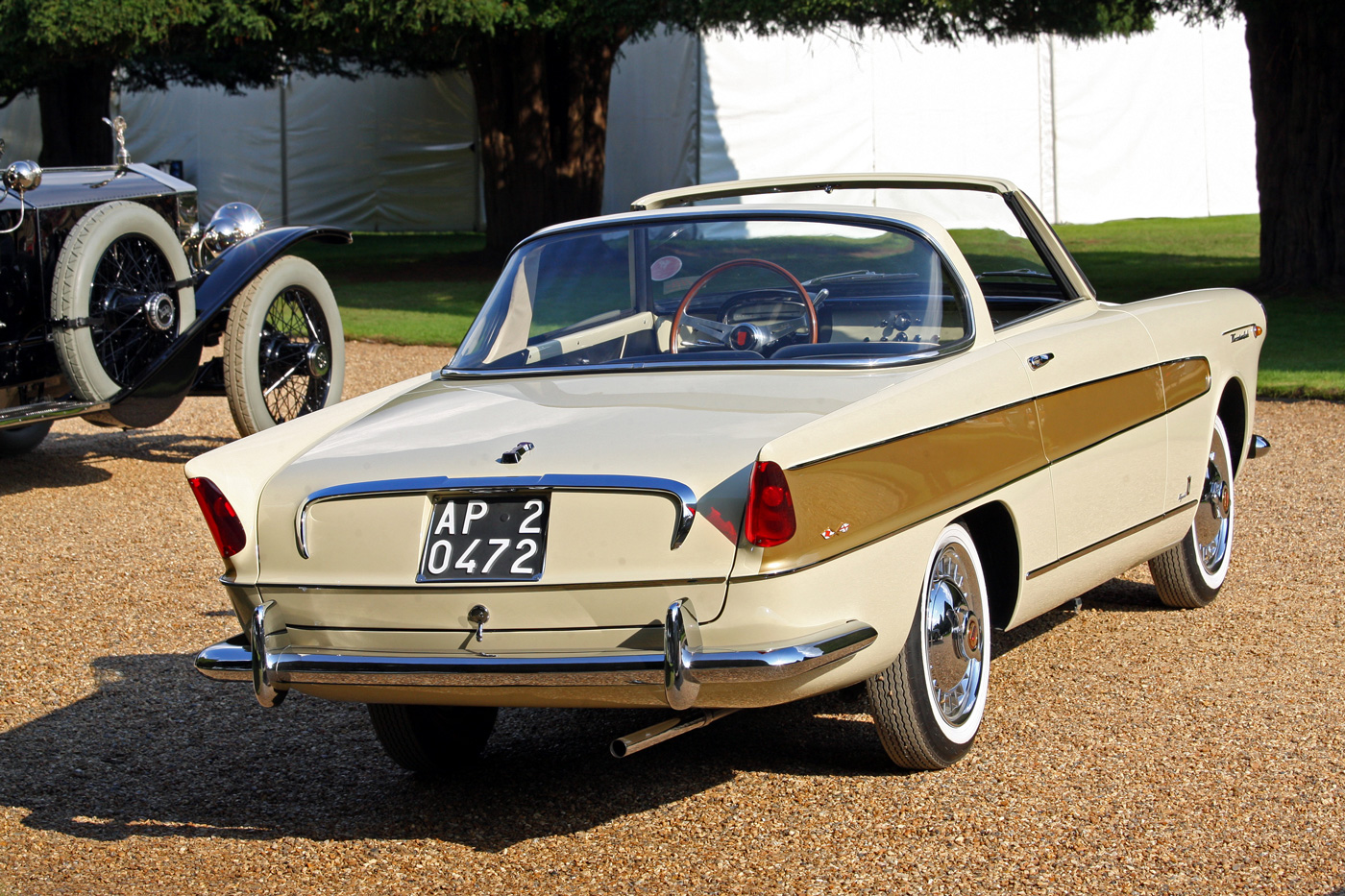
The removable targa roof panel was a new concept for the time. Each of the five was unique in its execution and this example is the last of them. Now owned by Kim and Stephen Bruno this was the Wonderful’s first showing since being fully restored.
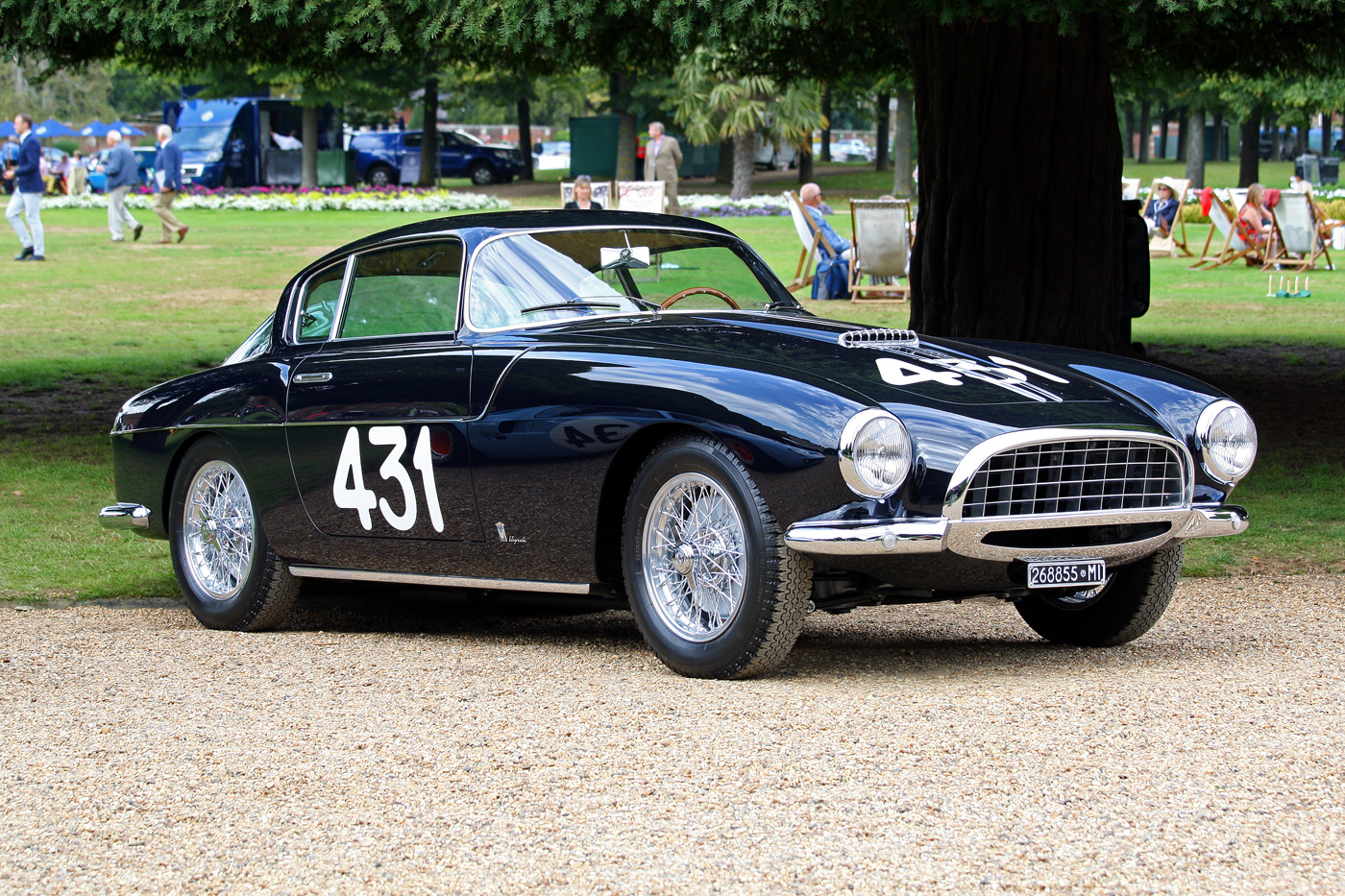
Named Otto Vu (8V) by Fiat who wrongly believed that the Ford Motor Company had copyrighted the term V8. Launched at the 1952 Geneva Motor show a total of 114 were built. This example dates from 1954 and has coachwork by Vignale.
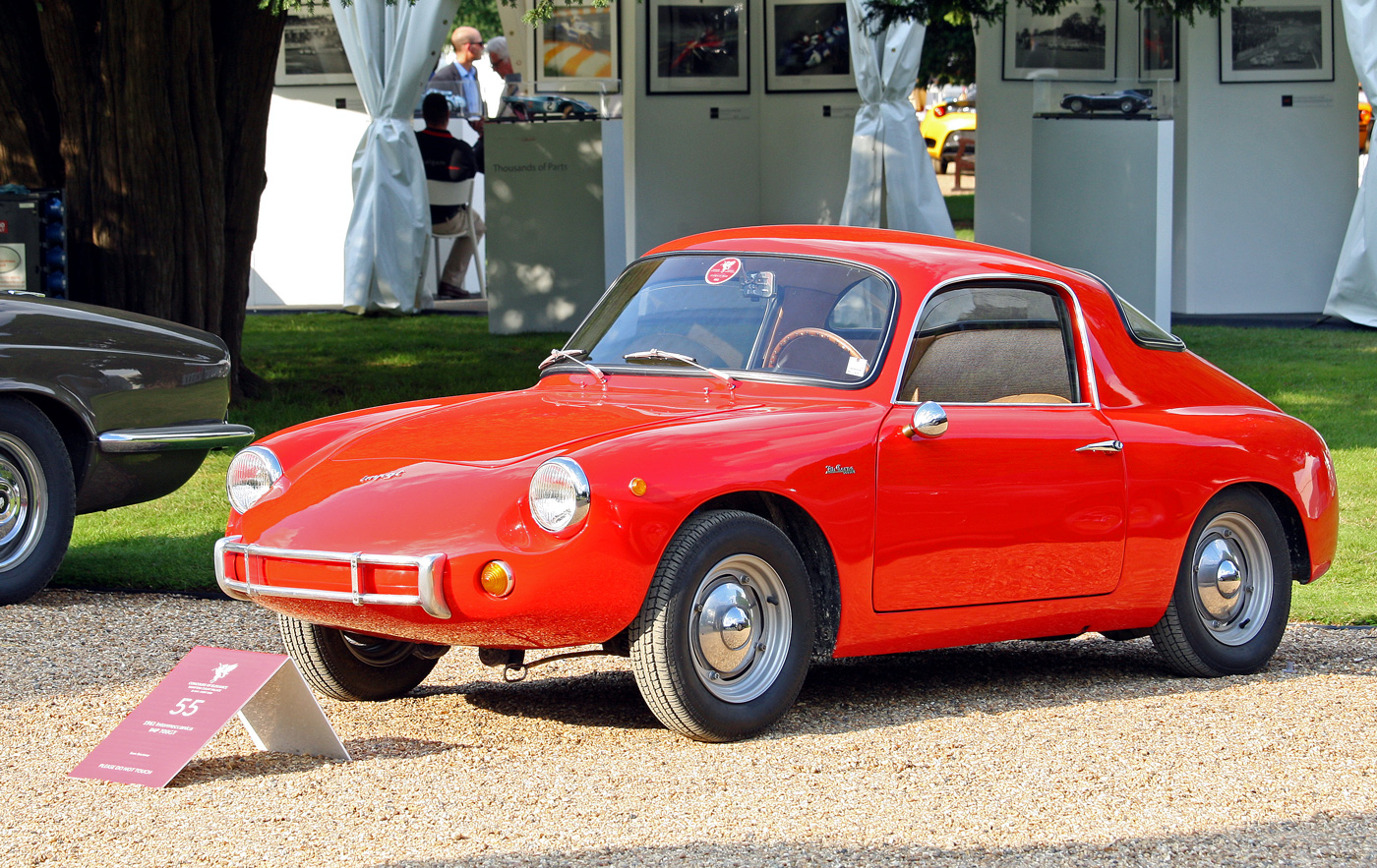
This tiny car is a 1961 IMP 700 GT. IMP stands for Intermeccanica Puch. Intermeccanica had been founded in Turin in 1959 by Hungarian-born Canadian Frank Reisner and initially marketed a successful range of tuning kits for popular everyday cars. Reisner then decided to build a small road going two-seater. He was been impressed with the performance offered by the little Steyr Daimler Puch (that was based on the floor plan of the Fiat 500 but powered by Puch’s own flat twin 500cc engine) that he had bought. For the car’s first service he drove it the 500 miles to the Puch factory in Graz where he met Jansci Puch, the nephew of the general manager. Both agreed that the car would make the great basis for a special. Reisner sketched a coupe designer and had the car rebodied to that design by the Corsa brothers in Turin.
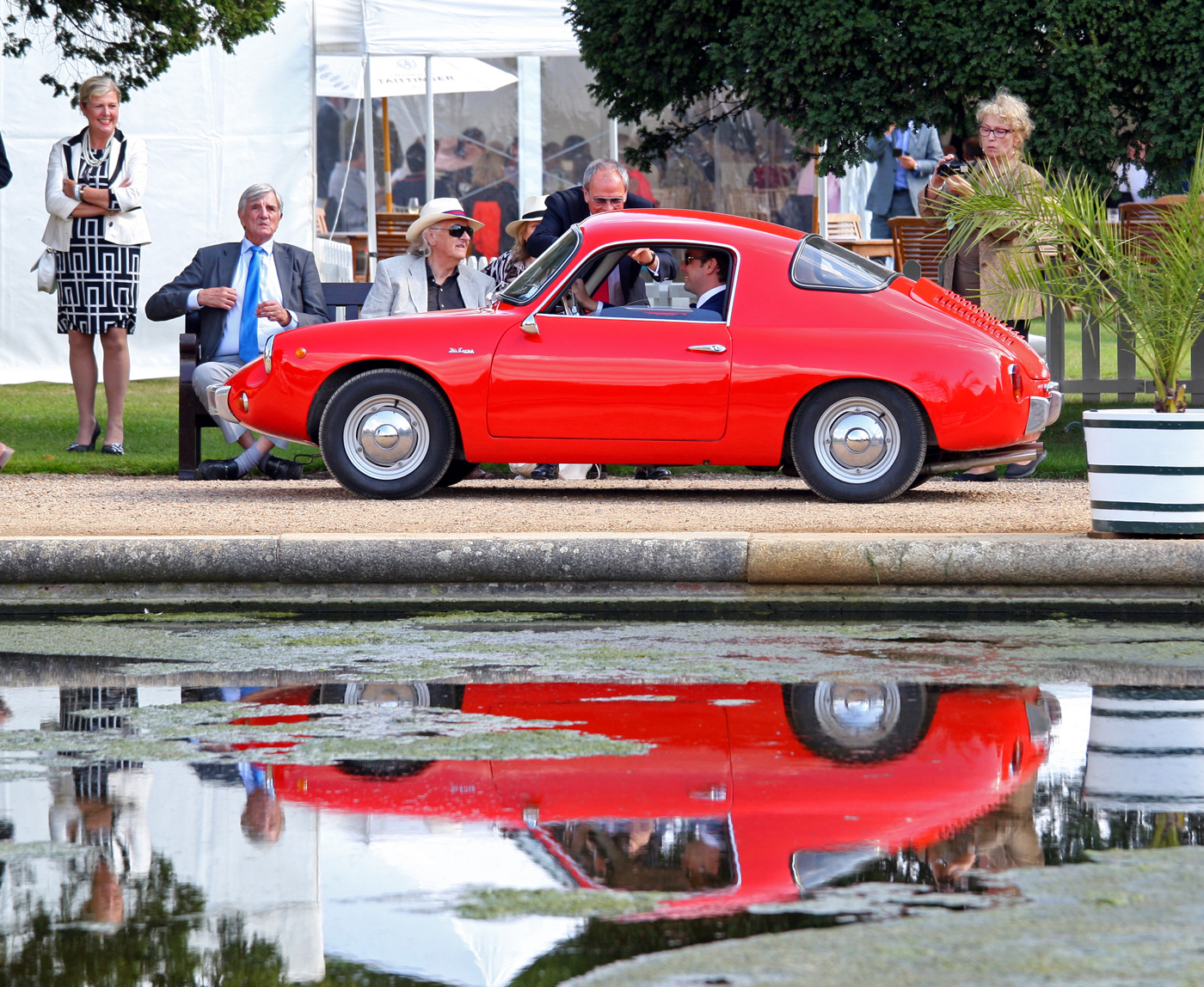
Five examples were initially ordered so production commenced in Turin. Reisner would be sold floor pans and drive trains, fit the special body and then sell them through Steyr Puch dealers in Germany and Austria. In September 1961 two IMP GTs were entered by Puch dealers in the endurance race held at the Nurburgring. One of entrants took the flag and handsomely beat the Fiat powered Abarths into the bargain. Carlo Abarth was very upset by the loss of face; Carlo pressured Fiat into forbidding Steyr Puch to supply Fiat parts to Intermeccanica, or to any other racing enterprises. Production ceased after only 21 examples had been constructed.
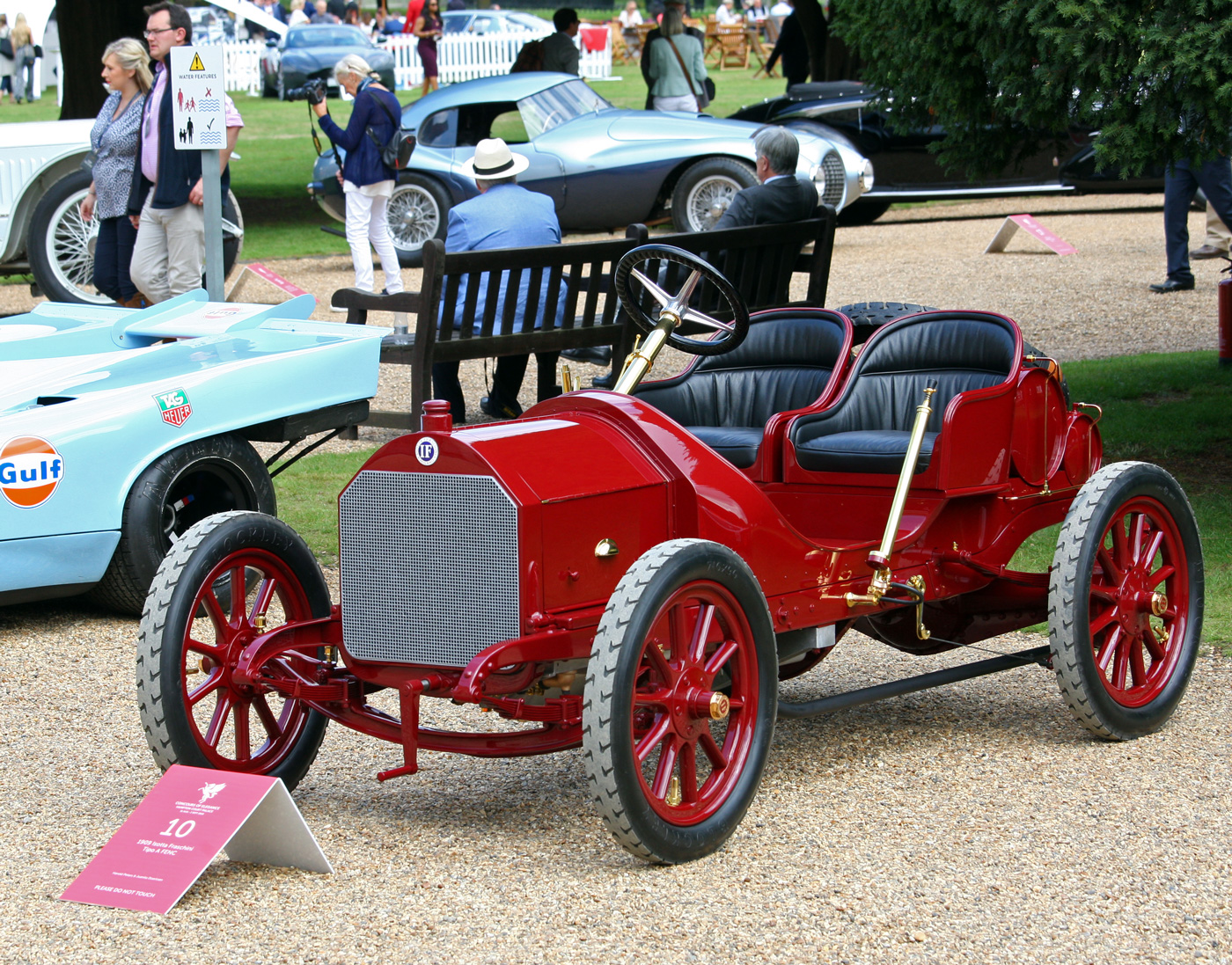
Isotta Fraschini FENC Tipo A dates from 1909. This example, chassis 6023 is one of only five known in the world. Costing $2500 the model made its debut at the 1909 New York City Importers Automobile Salon. The first know owner of 6023 was a Yale Graduate financier Noel McDonald who was certainly driving the car in 1914. By 1939 the car had been abandoned in the Bronx, derelict but mainly intact. In 1969 a New York enthusiast bought it and a decade later bought chassis 6007, the only other FENC known in the USA. In 1985 Jeffrey Vogel and Bob Rubin obtained both examples and sent them to Bonfanti Garage in Bassano del Grappa for restoration. Vogel had become friends with the Caproni family the owners of Isotta Fraschini at the time and they gave him full access to factory original documents and drawings. Retaining virtually all original components and reproducing missing items from the drawings Bonfanti restored 6023 back to excellent drivability. In 2017 was restored again, this time back to full factory specs.

New York car importer Max Hoffman ordered this unique Pininfarina bodied Jaguar XK120 for his own use. The chassis, fitted with the special equipment C Type engine, was completed in April 1954 and then shipped to Italy the following month. When the work was completed at the Turin works the car was displayed at the Geneva Motor show. The car was scheduled to appear at the 1956 Turin Motor show but Max was impatient to have his car in New York. The car then vanished from view until being found, in a poor state of repair, in 1979 by a German collector. The present owner purchased the car, still in an unrestored state, in 2014 and commissioned Classic Motor Cars in Shropshire to restore the car. Two years and 6750 man-hours later the results speak for themselves.
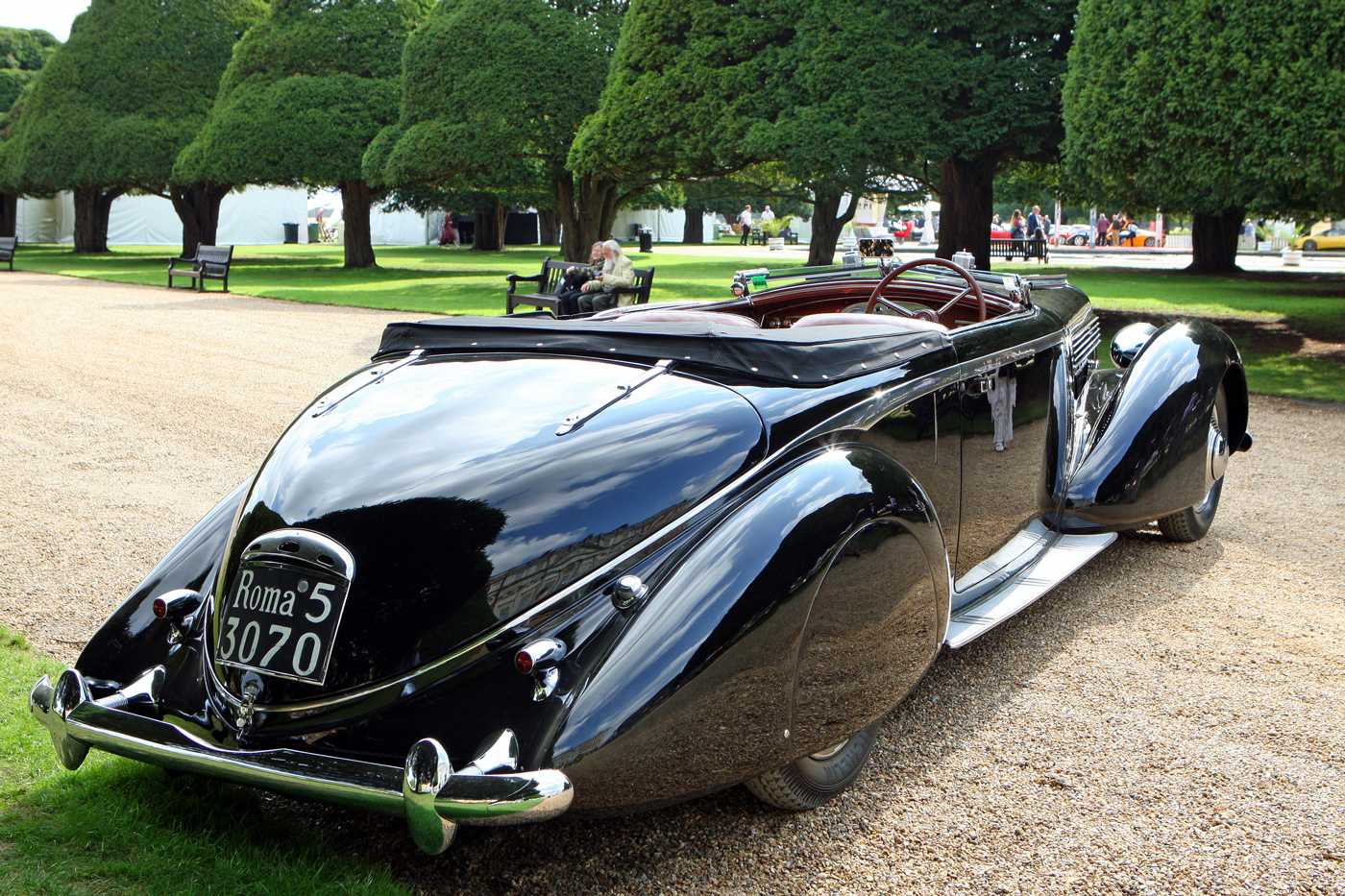
The first owner of this 1936 Lancia Astura Farina Bocca cabriolet was Navarra Viggiani who was one of Mussolini’s Generals. Five months later he sold the car to Attilo Serafini who kept the car until 1970.
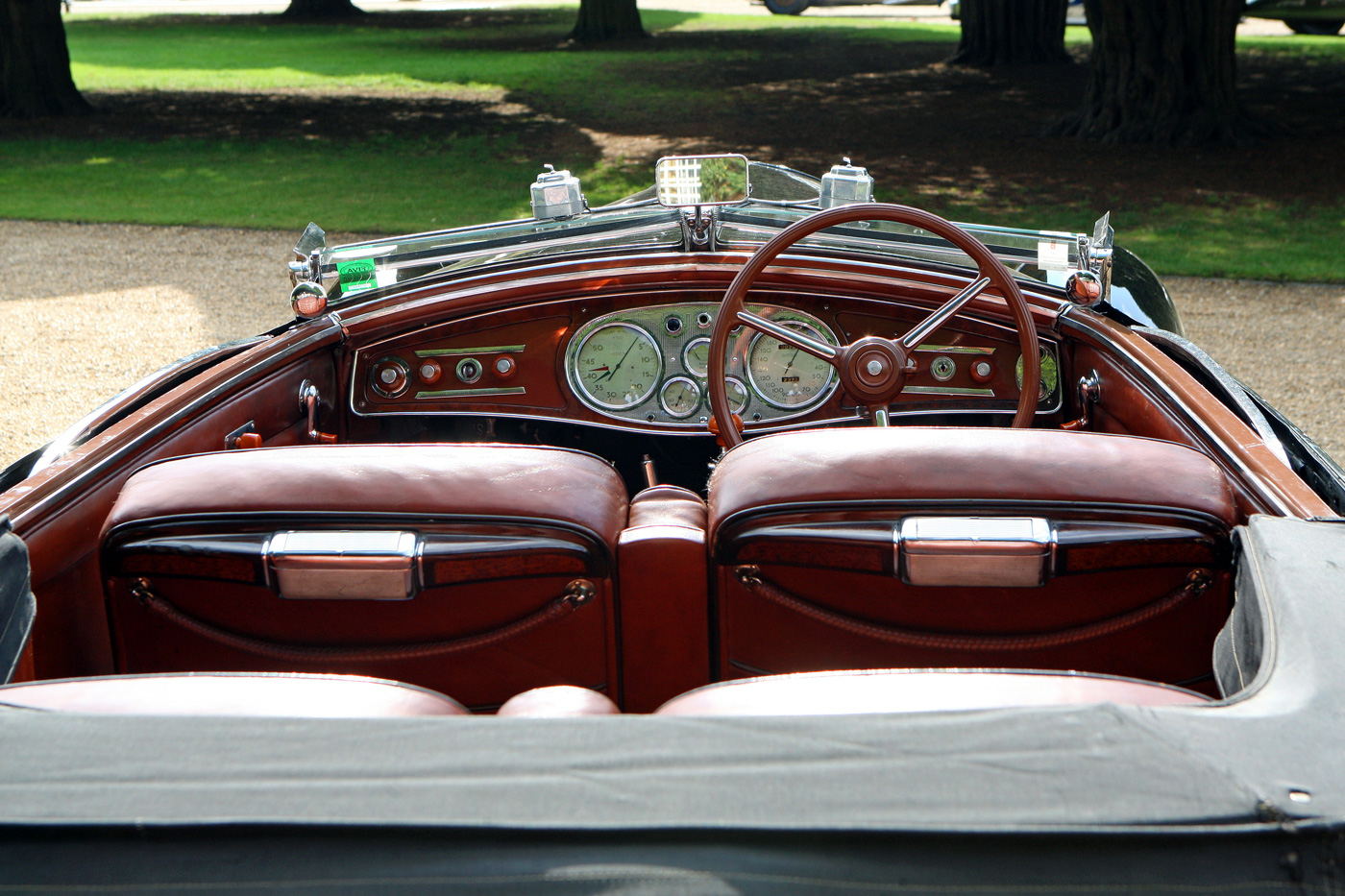
One of six built (of which four still survive) for the Bocca car dealership in Biella the car remains in remarkable unrestored condition. Anthony MacLean, the current owner, purchased the car in 2015.

Lagonda-Rapide-V12 Delivered new to Alastair McAlpine, a baronet and head of the McAlpine building empire, this Lagonda V12 Rapide dates from 1939. Alastair had four carburetors fitted to the WO Bentley designed engine as per the Le Mans entrant. By the 1960s the car had made its way to the USA before returning to the UK forming part of Lord Bamford’s collection. Lagonda was founded in Staines in Middlesex in 1906 by an American, Walter Gunn, who was an engineer and opera singer. ‘Lagonda’ is the euphonious Shawnee Indian name for the creek located in Springfield, Ohio where Walter grew up. The V12 story starts with Alan Good, a solicitor who outbid Rolls Royce/Bentley when Lagonda hit financial trouble. He the hired WO Bentley as technical director, who with the input from several former Rolls Royce engineers created the aero engined inspired 4.5 litre V12 masterpiece.
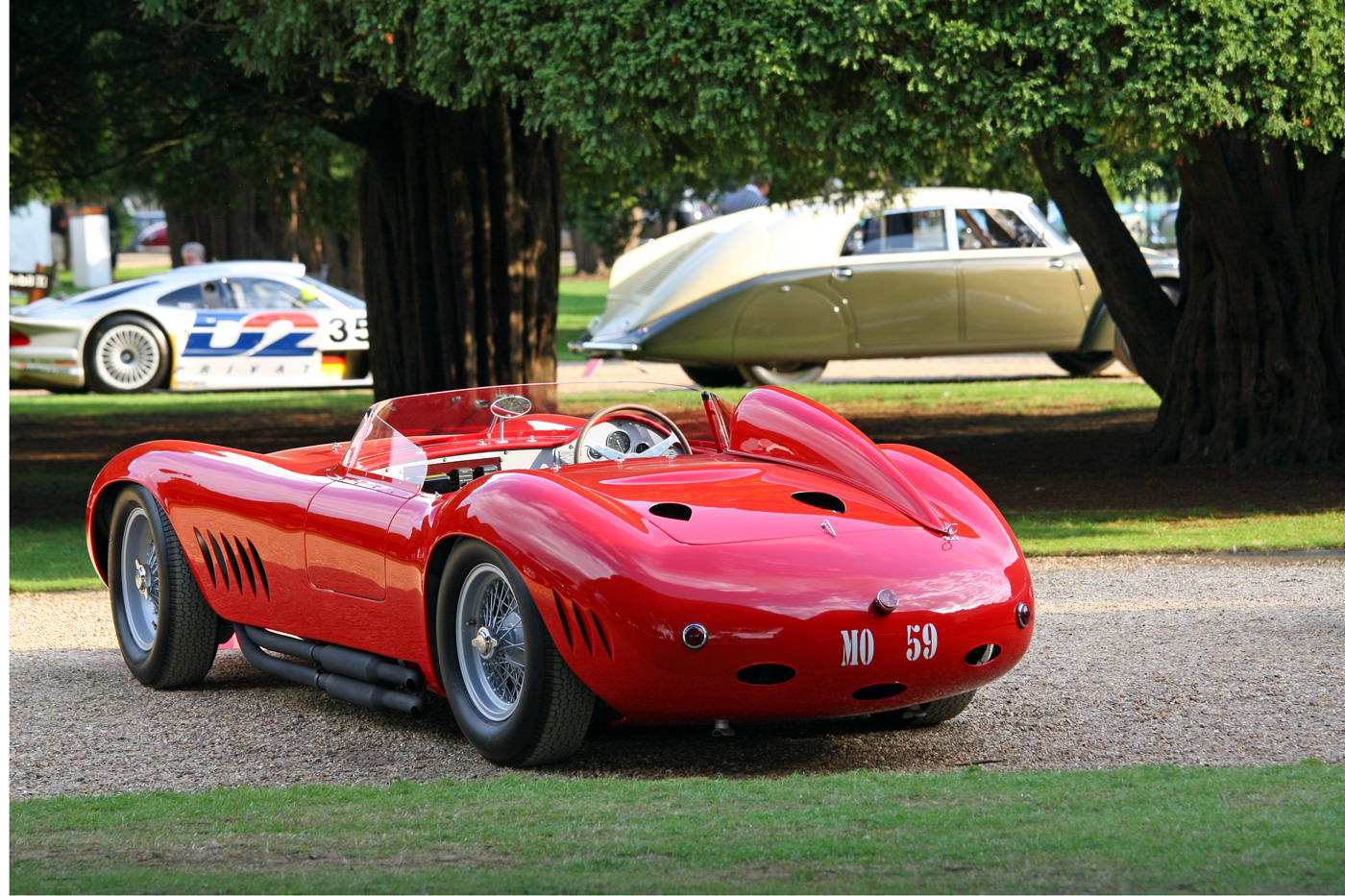
The Maserati factory started construction on this 300S, one of only 26 built, in 1957 for a Czechoslovakian racing driver in Guatemala. When the cheque for $10,000 did not arrive, the car became a works car for Stirling Moss in who’s hands it met with much success including victory in the Kanonloppet sports car race in Sweden. The car is now in the custody of Andreas Mohringer.
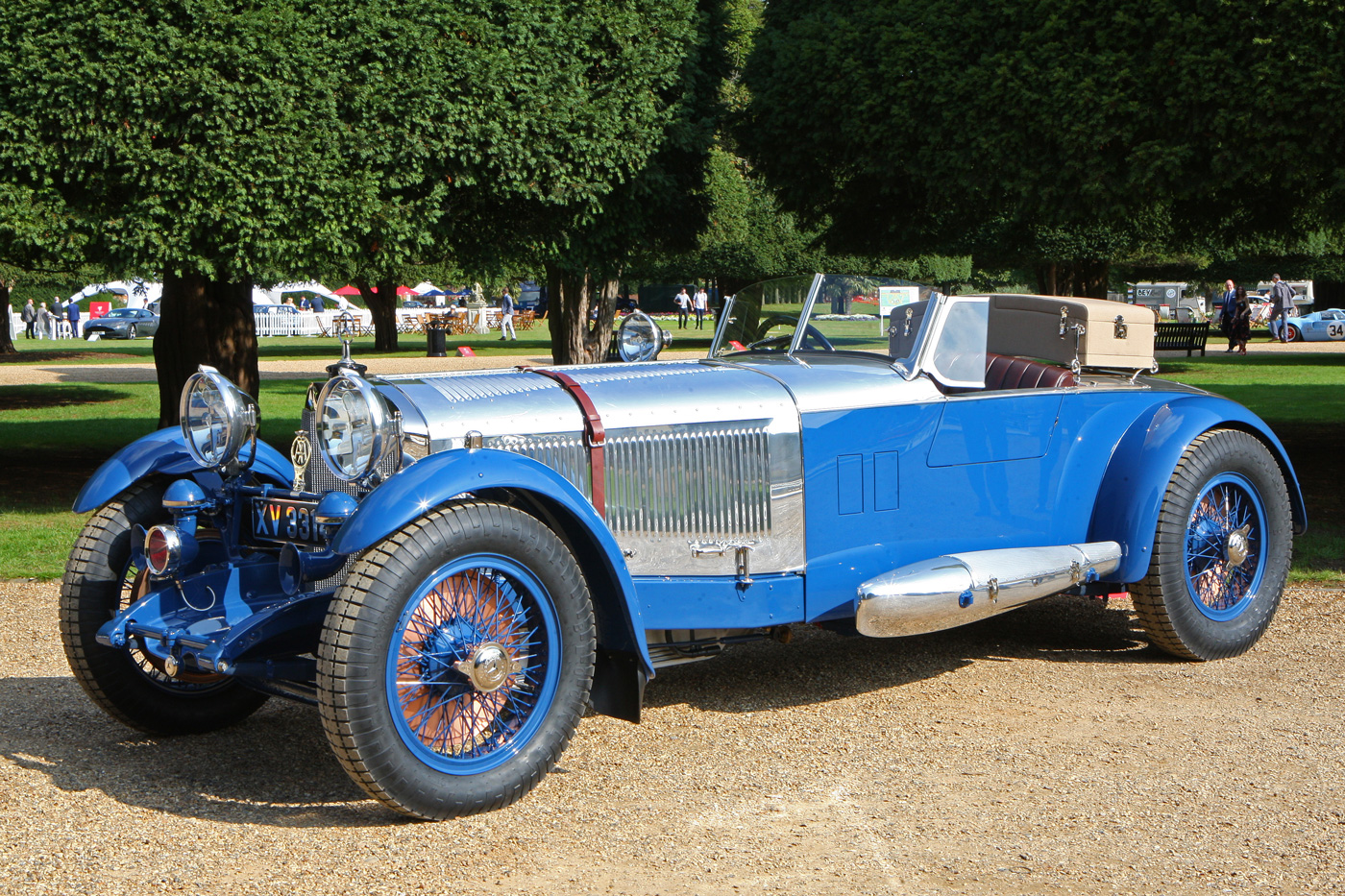
Francis Curzon, the right Honorable 5th Earl Howe, had already enjoyed a distinguished career in the Royal Navy, and as an MP before he began his motor racing career at 44 years of age. He competed at Le Mans six times, taking victory twice. He founded the British Racing Drivers Club, and having a fine appreciation of fine things, built up a collection of first class automobiles. After the Earl acquired this 1929 Mercedes Benz S type 26 120/180ps tourer, he commissioned Barker to construct this unique coachwork which contains many features more often found on aeroplanes. The Earl went on to use the car for continental touring, hillclimbs and sprints. Period photographs show the Benz as having a red spot light on the front below the offside headlamp. These lamps were given to members of Parliament so as they could signal to other road users their honorable status. The Earl sold the car in 1933 and over the years the car passed through the hands of various owners including Tony Hulman of Indianapolis fame. Unsurprisingly Howe’s Mercedes won best in show.

This 1953 2.8 liter Pegaso Z-102 Spyder began life as a Touring bodied Berlinetta purchased by Juan Jover, who was the first Spaniard to compete in Formula One. He became a works driver but crashed this car during practice for the 1953 Le Mans 24 hour race. In 1959 he commissioned the Spanish coachbuilder Serra to convert the car into a roadster. The car is now owned by Rafael Pueche.
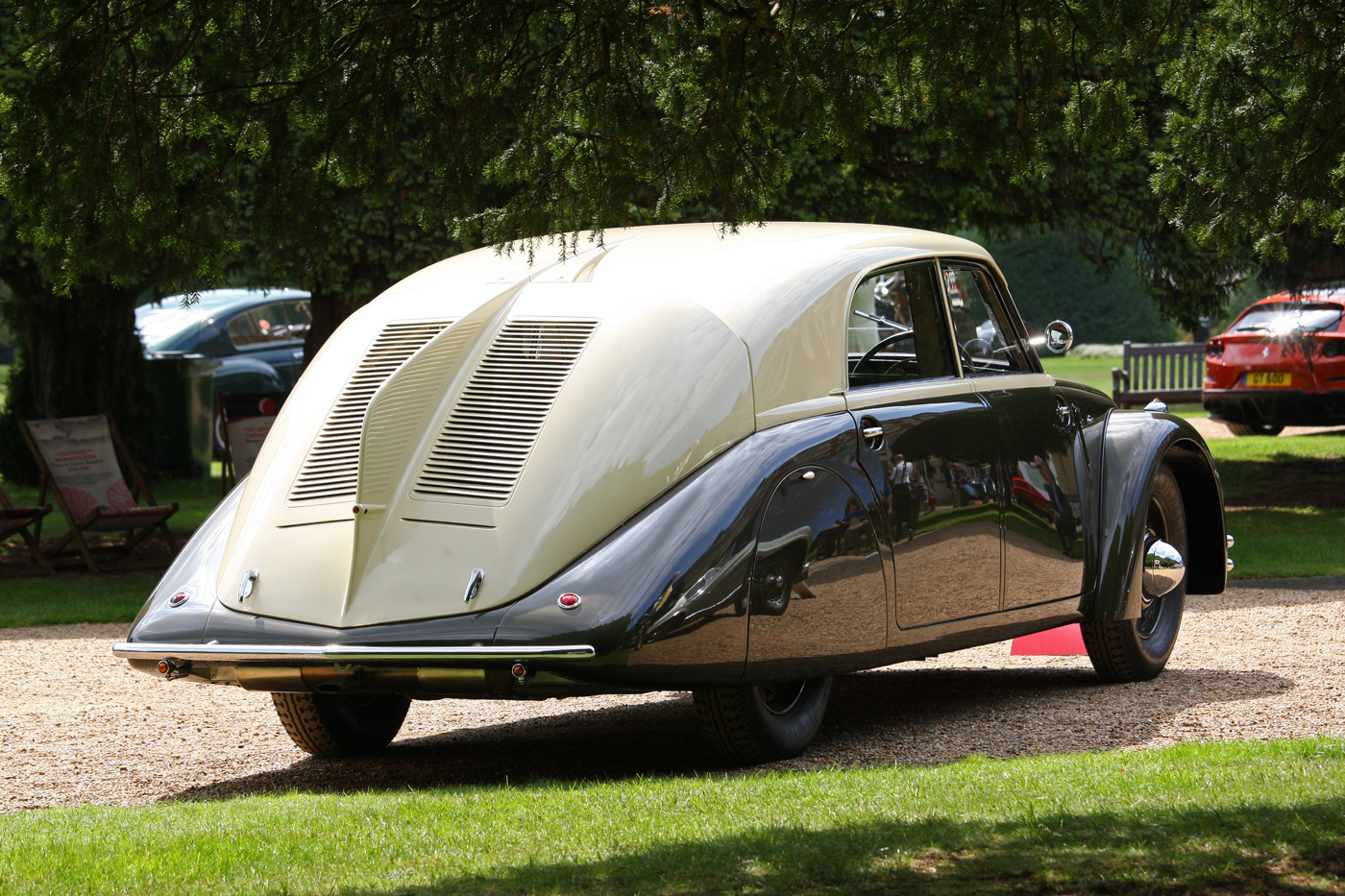
Tomas Hoferek’s 1935 Tatra 77 is the only 77 shown in archival photographs as having two tone paintwork. The Tatra 77 was mostly the work of automotive pioneer Hans Ledwinka and Zeppelin designer Paul Jaray. The 77 has a drag coefficient of only 0.36 which is the same as the Citroen CX from 1974. The first owner was Graf Sander Bernat Torok de Szendro who was a member of the Hungarian aristocracy and who’s mother was a famous Opera singer and actress.
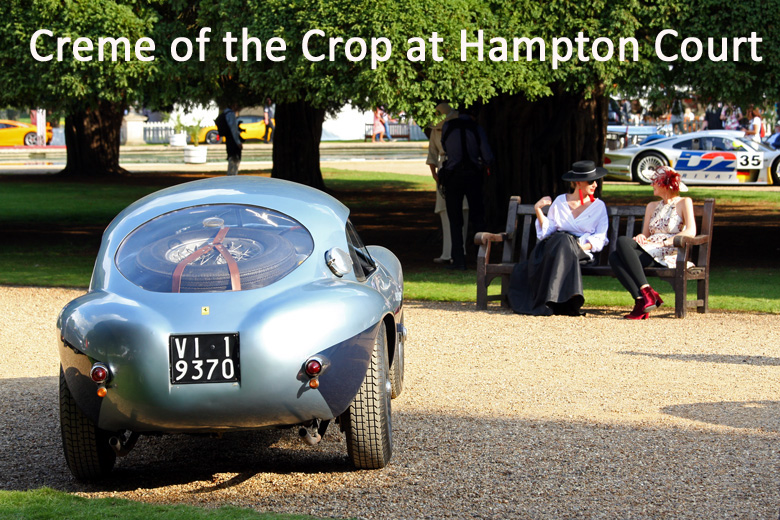
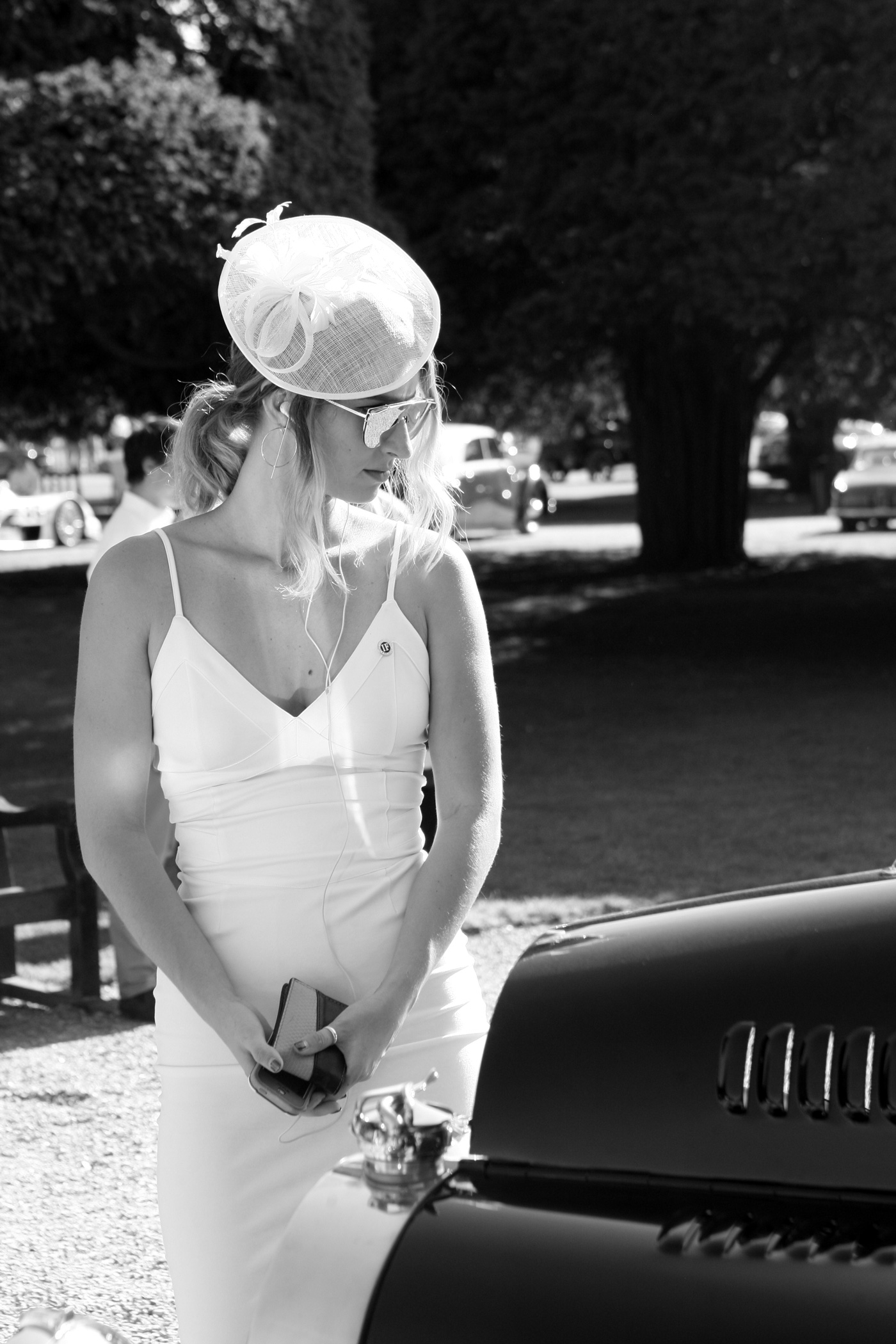
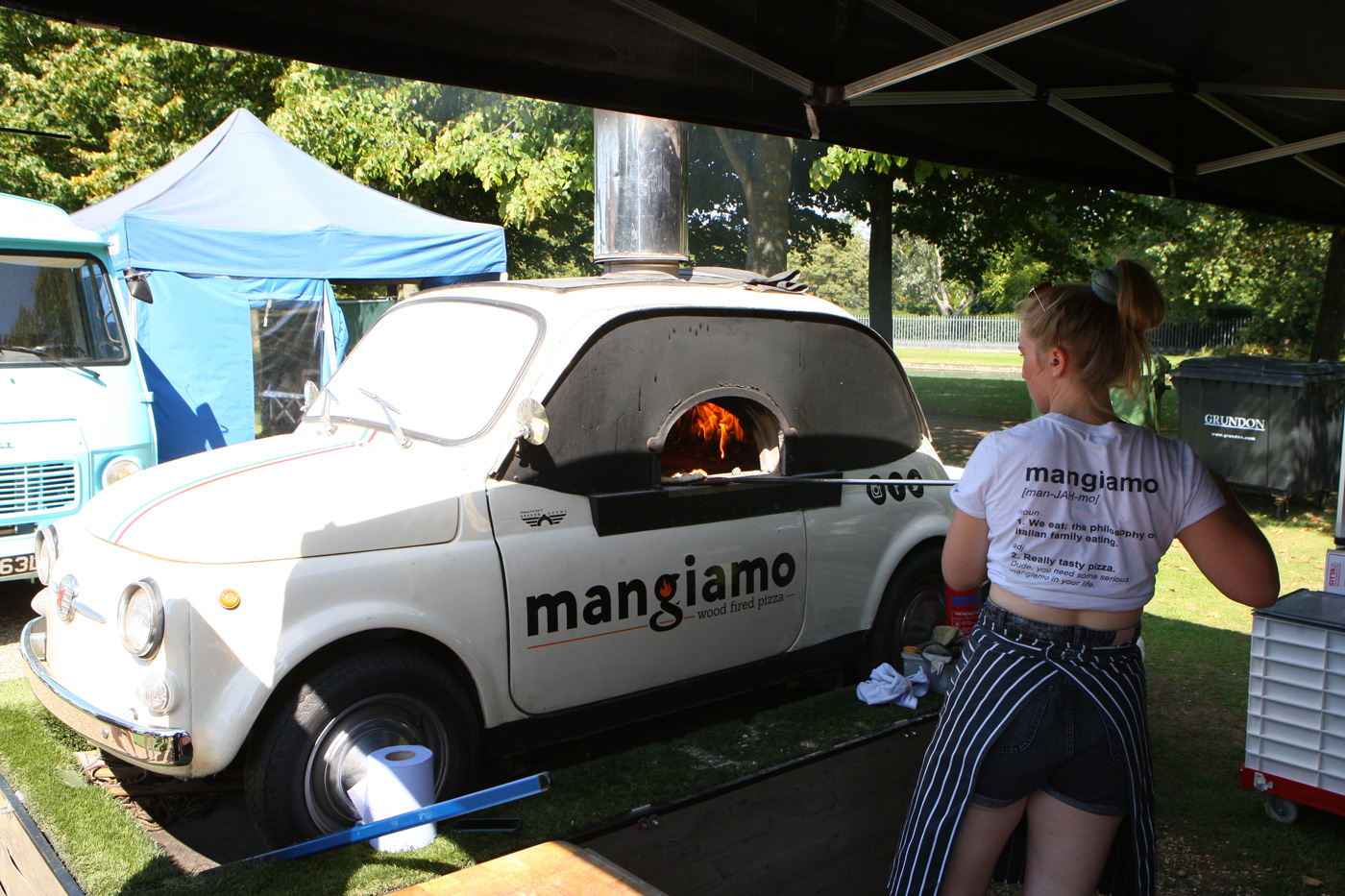
There is so much I don’t know! Thanks very much for the great report and photos.
I will second that! It may not have the expanse of water that is the setting of Villa d’Este and Pebble Beach, but a nice wide river and superb cars, is surely for the Hampton Court event to become a worthy rival.
A big dollop of history thrown in for good measure.
Majestic locations add to the excitement of great cars ….. nice to see another concours show from the Brits emerge onto the world stage.